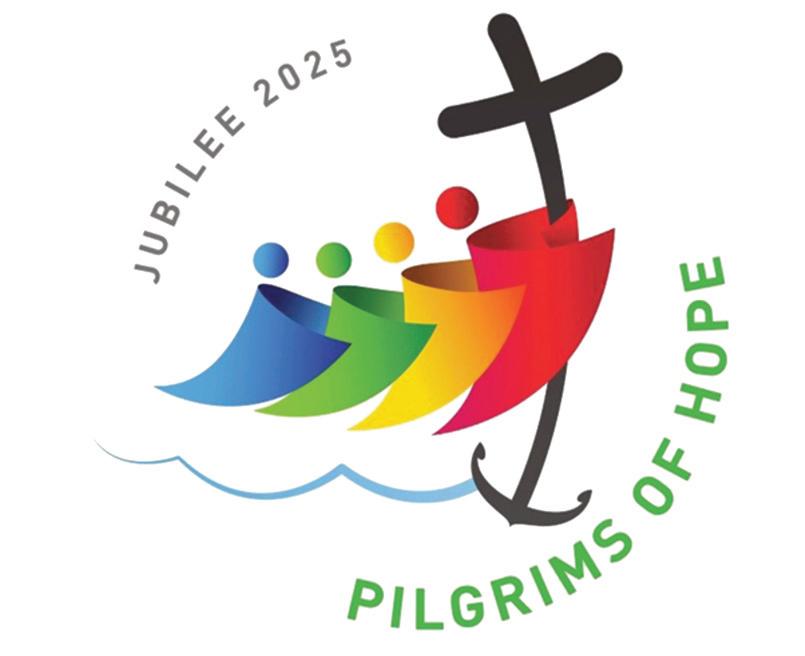


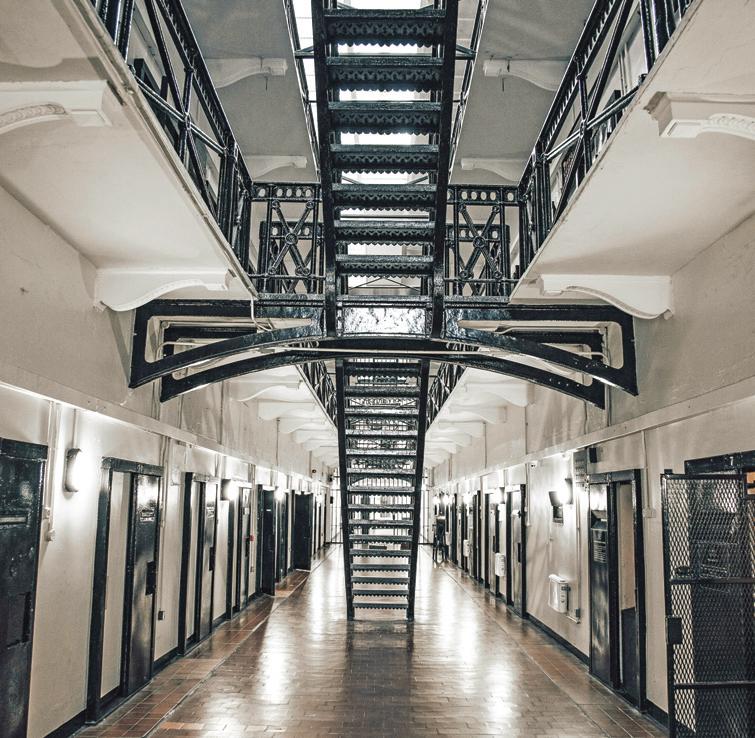

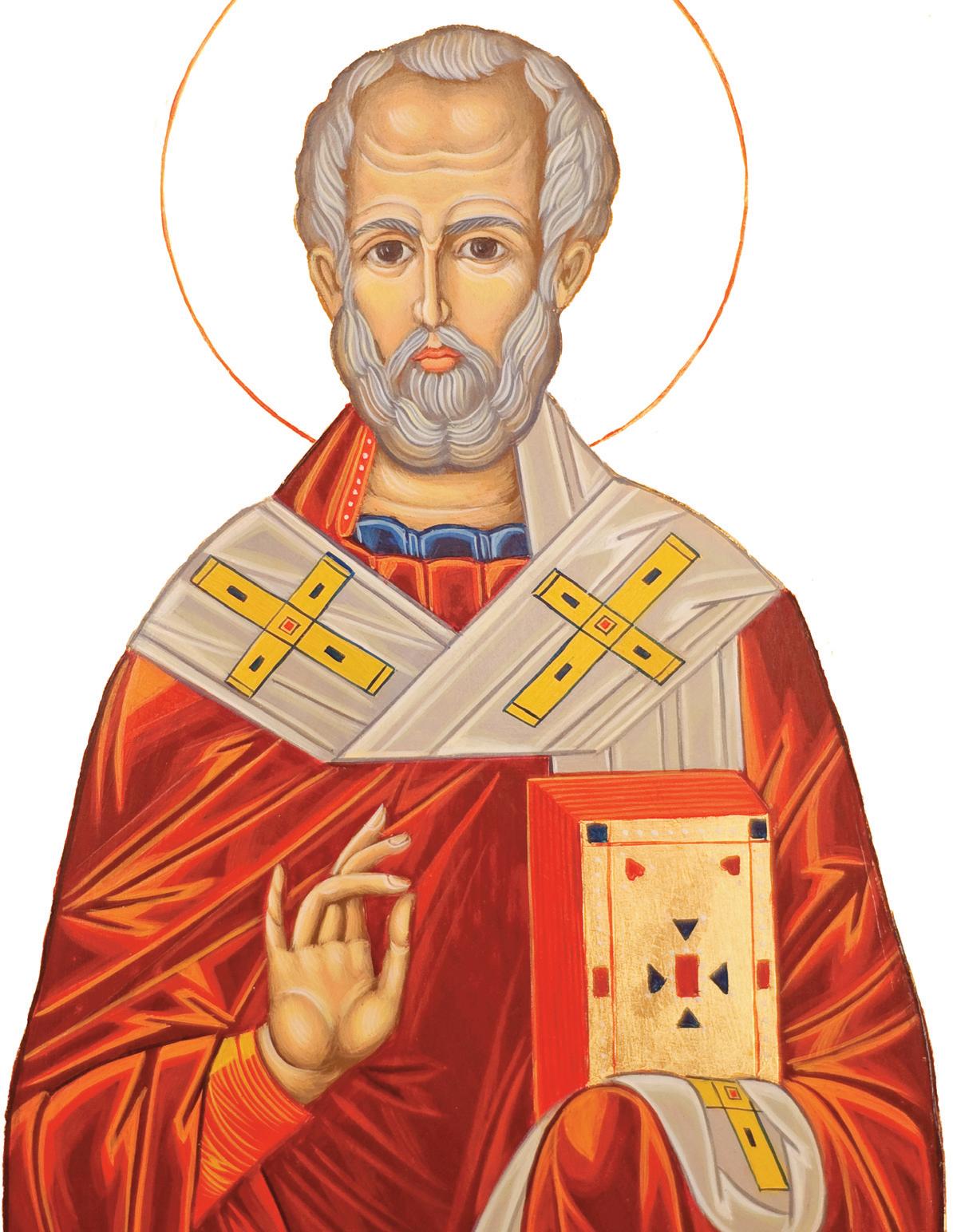









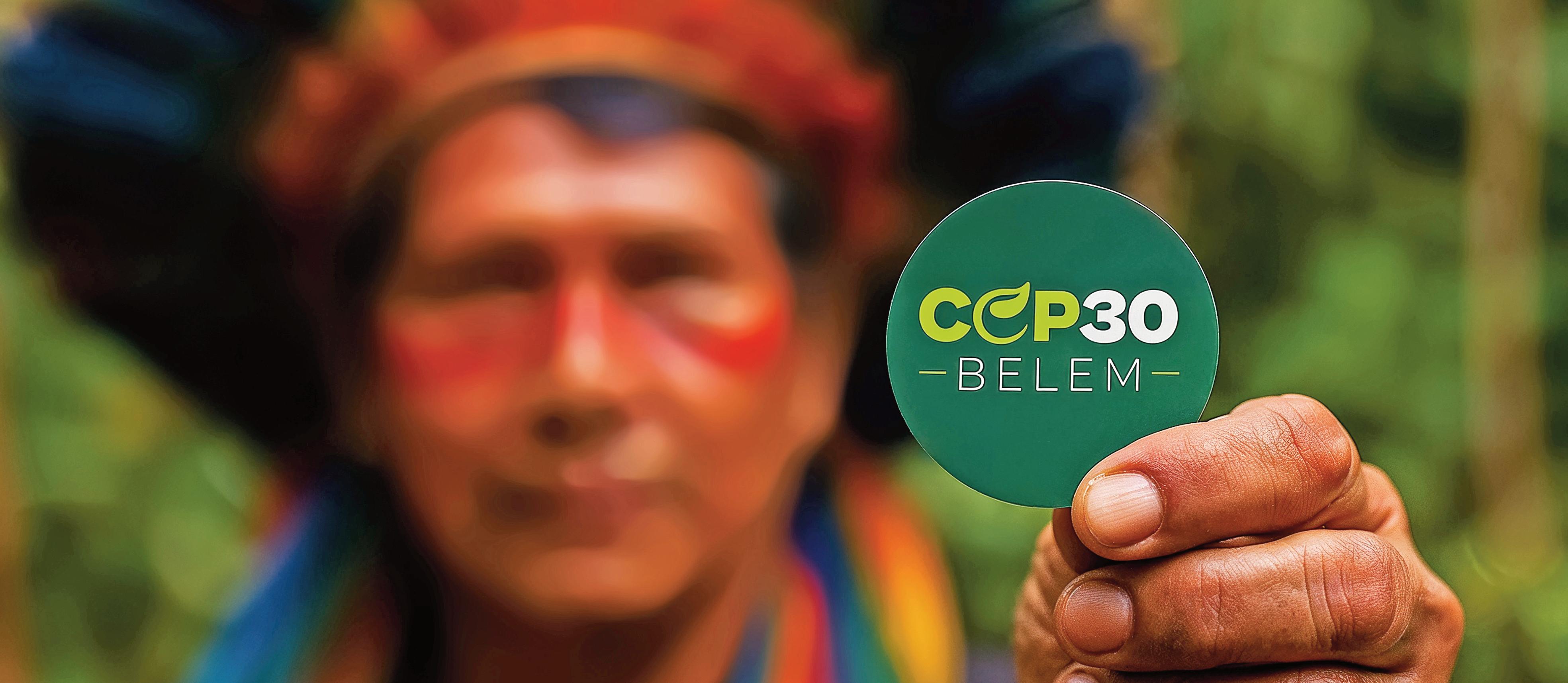
In a world caught between the roar of storms and the silence of inaction, Pope Leo XIV spoke not merely as a religious leader, but as a voice for our shared home. He reminded us that the health of our planet, the dignity of every human being, and the hope for lasting peace are inseparable.
He opened with a sharp recognition of reality: “In the midst of a world that is in flames, as a result of both global warming and armed conflicts,” he told the gathering, this conference must become “a sign of hope.” The imagery is stark — fire, flames, crisis — yet the underlying message is one of possibility, not despair.

He pointed out that peace is not simply the absence of war, but the presence of justice, respect for creation, and solidarity among nations. “If you want to cultivate peace, care for creation,” he urged. In other words, our treatment of the Earth reflects our respect for each other.
And he did not mince words about the moral dimension. The ecological crisis, he said, “is a moral issue” — one that reveals our interdependence and calls for a new solidarity, especially between wealthier and highly industrialised nations, and those most vulnerable to climate impacts. He reminded us
given
that the poorest and most vulnerable will pay the highest price if we fail.
He acknowledged progress — referencing the Paris Agreement of 2015 — but candidly observed that the “path remains long and complex”. Words alone, he declared, are insufficient. They must be transformed into choices and actions rooted in responsibility, justice and equity.
But perhaps the most compelling vision was his call for an “ecological conversion” — an interior as well as external change. He urged that our finances, our education, our policies
reflect a new understanding of our place in creation.
He spoke of a “new human-centred international financial architecture” that ensures especially the poorest and most vulnerable are enabled to participate, to flourish, and to protect their dignity. He invited “education in integral ecology” that shows how personal, family, community and political choices shape our future.
Continued on page 3


CONTACT US:
The Catholic Post is published by its owners CathCom Limited and is wholly independent of and separate from any previous newspaper.
The Catholic Post is published on the last Sunday of the month previous to publication date.
EDITOr:
Nick Layton email: editor@catholicpost.co.uk
ADVErTISING:
Charlotte / CathCom Ltd. 01440 730399
charlotter@cathcom.org
DESIGN & LAYOUT:
David Lodge, davidl@cathcom.org
PUbLISHED bY: CathCom Ltd. N2 Blois Meadow Business Centre, Blois Road, Steeple Bumpstead, Haverhill, Suffolk CB9 7BN 01440 730399
ArTICLES TO:
The Catholic Post email: editor@catholicpost.co.uk or davidl@cathcom.org
Please send articles for publication by email, supplying any photos separate to the text We welcome contributions
Here are answers to some basic questions about writing for The Catholic Post
How long should articles be?
Usually it seems to work out best if contributors simply say what they have to say and let us worry about finding a spot for it in the paper.
What is the submission procedure?
Please send as a Word file attached to an e-mail. To submit articles for publication, send to editor@catholicpost.co.uk
Charts, graphs, and photos should be submitted as separate PDFs. Electronic photos should not be embedded or pasted into a Word document as this reduces their quality.
Photographs and Illustrations
Photographs and Illustrations should be supplied electronically as high resolution JPEG (*.JPG) files).
Photographs and illustrations should be sent in colour with a resolution of 300 dpi and a minimum size of 100 mm x 100 mm when printed (approx. 1200 pixels wide onscreen).
Computer print-outs are not acceptable. Screen captures are not ideal as they are usually not very high
Parental permission should be sought before submitting photographs of minors.
Source information -
DW = Diocesan Website.
ICN = Independent Catholic News
Views expressed in The Catholic Post are not necessarily those of the editor Last date for copy is the LAST DAY of the month prior to publication.
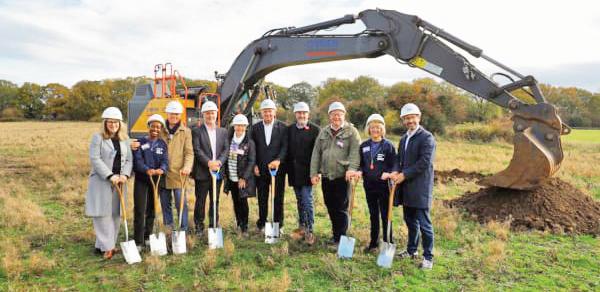
Britain must not lose sight of its Christian roots — that was the message as construction officially began on Eternal Wall of Answered Prayer
Towering above the Angel of the North, the huge landmark will contain a million bricks, each telling a story of answered prayer. The structure will remind future generations of Britain’s Christian heritage and bring hope for hundreds of years, said the project’s visionary Richard Gamble at this week’s ground breaking ceremony.
Around 200 guests — including donors, civic leaders, pastors and long-standing supporters — gathered on site in Coleshill, near Birmingham, to witness the start of building work after the project reached its initial £40million fundraising target.
Eternal Wall is anticipated to attract around 250,000 visitors a year once fully open in 2028.
“This is a day I have prayed for, dreamed of and worked towards for 21 years,” said Gamble. “Eternal Wall will be a living monument declaring that Jesus is alive and still answering prayer today. It will tell the story of a God who has shaped our nation — the God who stood with us in war, in hardship and in revival — and who continues to move in the lives of ordinary people.
“Long after we are gone, Eternal Wall will remain as a beacon of hope. It will shout to future generations that Jesus answers prayer.”
Lord Robert Edmiston – whose company IM Group donated the land for the site and more recently made a significant donation towards building costs – was in attendance and told the crowd he is excited to see work progress.
He said: “We once sent missionaries around the world — but in recent times you might ask what’s happened to Christianity in Britain.
“Yet today I am encouraged: faith is rising again, and this Wall is part of what God is doing in the UK. IM Group is honoured to support a landmark that points to God’s goodness.”
CEO Ian Bullock said the ground breaking event was ‘historic’. “Today we witnessed history — the beginning of a once-in-a-lifetime project that will make hope visible for generations. Eternal Wall demonstrates the relevance of faith in everyday life. This is the start of something truly extraordinary.”
To ensure the site can become fully operational — including a visitor centre, car park and landscaped grounds — Eternal Wall has launched a public crowdfunder to raise the remaining £5.7 million needed.
To find out more scan the QR code right.

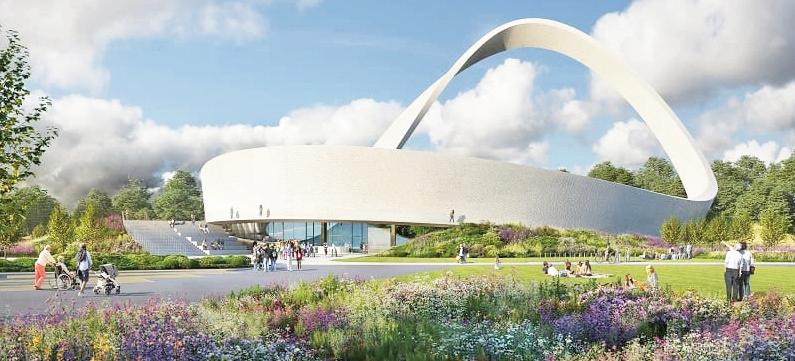
A cluster Parish Youth Group is regularly attracting an incredible number of over 80 young people every week, with more always welcome.
The St Carlo Acutis Youth Group, which in essence runs three sessions for varying age groups, is a collaboration between Our Lady of the Wayside, Olton Friary and St Augustine’s churches in the Solihull area.
It provides a welcoming safe space every Friday during term-time for young people to grow in faith, build lasting friendships, and take part in fun and enriching activities.
The group spent the whole of September celebrating the canonisation of their patron Carlo Acutis and the occasion had such an impact on a year 6 pupil, Thomas, that he chose St Carlo Acutis for his confirmation name.
Thomas, who loves attending the youth group and declares it the highlight of his week, has also developed his own website dedicated to the new Saint
The youth group has also been invited to make regular contributions on Radio Maria England.
Ray McNally, youth group chairman, explains how the group runs and is now in essence divided into three.
“We have a junior one (for years 4 and 5) that started earlier this year and is located at Our Lady of the Wayside. Thanks to the trinity of support between school, community and parish there are around 30 children attending every Friday.
“The senior youth group (year 6 upwards) moved to Olton Friary in September last year
Continued from page 1
In his closing, he entrusted his prayers to all the participants, invited them to embrace courage, to move from reflection to action, and to care for creation “entrusted to us by God in order to build a peaceful world.”
Why this message matters
It reframes the climate crisis as not just a technical or economic challenge, but a moral and spiritual one — one that demands our personal and communal transformation.

having outgrown the parish hall and facilities of Our Lady of the Wayside. This group are involved in formation - generally linked to the liturgical year.
“Then slightly older young people in years 8, 9 and 10 separate off after some leisure time and have their own discussions and debates. Recent topics have included LGBT, Palestine, assisted suicide, abortion - pro-life.
“These topics are chosen by the young people themselves, challenging and sometimes very controversial topics. There are lots of differing opinions, but our safe space provides an environment whereby all opinions are respected and valued. Each topic is led by either two young people or alternating with a youth leader leading the topic of choice each week.
“At the end of each discussion we do share what the Catholic Church opinion is - as a guide and reference.”
Ray reflected, “Since starting the youth group in September 2023, It has certainly been a journey and one that has been life changing personally speaking and indeed the same can be said for the youth leader team I have gathered around me. Most of which are half
It connects ecological responsibility to peace, human dignity and global solidarity — insisting that neglecting creation is neglecting our fellow human beings.
It challenges every actor — governments, businesses, local communities, educational institutions — to move beyond talk into courageous, concrete action.
It gives hope: yes, our world is in deep trouble, but the Pope envisions that through solidarity, justice and change of heart, we can shift course.
Three parishes were to be amalgamated. There was great distress. Christmas was looming and a nativity play was cancelled, with no place to go.
And so it was, that for the next seventeen years, a family opened their doors to provide a venue for the play. This play was led by the people, read from scripts and acted by adults and children alike. It drew people ecumenically, Catholic, Anglican, Baptist, Muslim and particularly importantly, those with no knowledge of the Nativity story.
There was an open invitation to all. As people arrived on Christmas Eve, they were asked if they would like to play a part. A room was piled with simple costumes and participants could choose what they wanted to wear. A pile of shepherd’s tunics, walking sticks as shepherd’s crooks. Bright tunics and robes for the kings. Blues for Our Lady and earthy colours for St. Joseph. A pile of white cassocks of all sizes to serve as Angel’s gowns and tinsel to deck heads with halos.
my age and are great role models for our youth – most of them are also regular attendees at mass – with one youth leader becoming a catholic at the last Easter vigil. Our youth group is in fact ahead of the curve so to speak as we have already proven how a cluster of churches can work and support one another that share the same common goal and objectives. Something that am sure will have to be addressed in the forthcoming time when more churches are being clustered together.
The strength of the group comes from the ‘Trinity of Community’. A collaborative triangle in which the parish community stands at the top, the Church (parish leadership and sacramental life) anchors the bottom left, and local Catholic schools anchor the bottom right. When these three entities work in harmony— supporting, informing, and uplifting one another—they create the essential foundation for a thriving youth ministry.
The youth group, which overall has some 16 youth leaders, is proving to be a great asset to parish life with some inspirational and moving stories of faith and growth.
Anyone interested in the youth group can email Ray for more information ray@extendaline.com
Whether you’re a policy-maker, a business leader, a health-care professional , or simply someone who cares for the future, the message is clear: our vocation is to steward creation, to defend the dignity of each person, especially those poor and vulnerable, and to live choices that reflect that calling. The Pope’s words invite us to ask: “What can I do today — in my community, my workplace, my sphere of influence — to live this ecological conversion?”
A volunteer assisted with safety pins and guidance on suitability of outfit… The parts of Mary and Joseph were usually played by adults, as were the lead shepherds, Kings and Angel Gabriel.
With mince pies munched and all decked and ready, the scene was set. Joseph knocked loudly on the front door…. We follow him outdoors.
In the garden the shepherds then gathered. There were toy lambs, but also real sheep in a pen. Whenever possible, there was also a real live baby Jesus and then the baby’s mother, or one year his aunt, played Mary. The story progressed with carols, torchlight and candles, towards the garden sheds where the Holy Family took refuge.
It was Christmas Eve once more! Spirits were lifted, friends reunited, and strangers welcomed.
(Further Christmas Eve Nativity Play items on the website shortly.)
office@crownofthorns.org.uk www.crownofthorns.org.uk
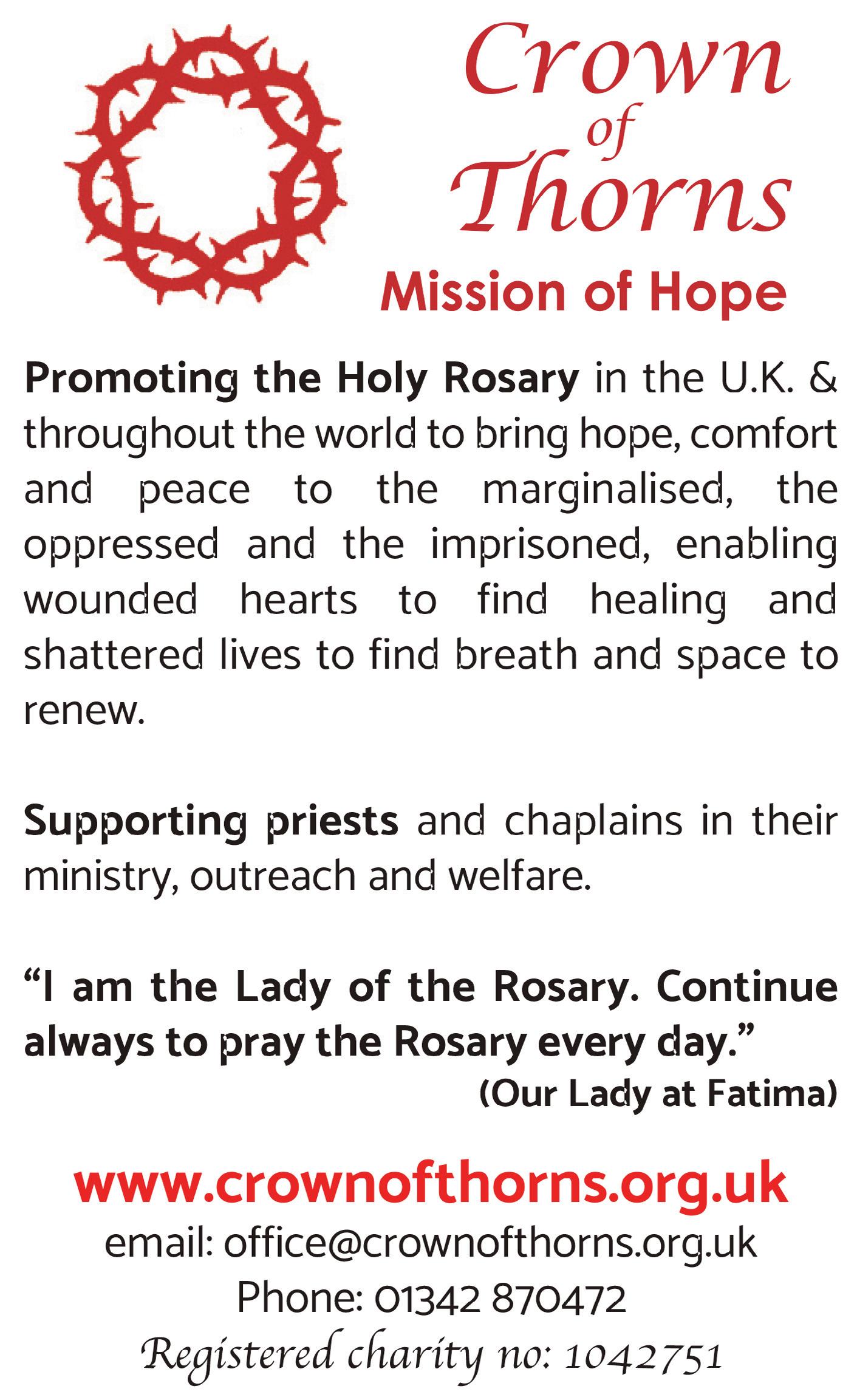
rcdea.org.uk
Nine-year-old Maximilian Clovis from Walsingham shares how discovering the hidden beauty inside ordinary stones helped him see God’s presence in all of creation
This summer, my grandparents came to visit like they do every year. It’s always super exciting because they bring surprises for all of us – and I have eight brothers and sisters, so that’s a lot of surprises! This time, they gave me something really special – a gem and rock collection. I love rocks and stones and always ask my dad questions like, “What’s inside this one?” or “Why is this one so shiny?”
My dad saw how much I liked them and asked me if I wanted a lapidary machine. I didn’t know what that was, so I asked him. He said it’s a machine that cuts open stones and polishes them. I got so excited! I ran to get my money jar that I’d been saving and Dad said he’d pay half. Soon, we had a real machine with a diamond blade! Don’t worry – it’s not sharp, so I could use it safely.
When I started cutting open stones, I couldn’t believe what I saw. Some of the plainest, most boring-looking rocks had the most beautiful
patterns and colours inside. It felt like God had hidden tiny treasures in them. I started thinking that maybe God put beauty in everything, even things that look ordinary. That made me want to find the most amazing stones God placed in Norfolk.
We’re not allowed to take stones from the beach, so Dad bought me a big bag of stones that came from near the Norfolk Sea. Every time I opened one, it was like a surprise from God – like a Kinder Egg but made of stone! Each one was different and special.
My biggest dream is to find the most valuable stone in England. It’s called Blue John. It looks normal on the outside but inside it has purple, blue and white crystals. I think it’s one of the most beautiful things God made. When I’m older, I’m thinking of being a geologist so I can discover all the beauty God created in forming our home – planet Earth.
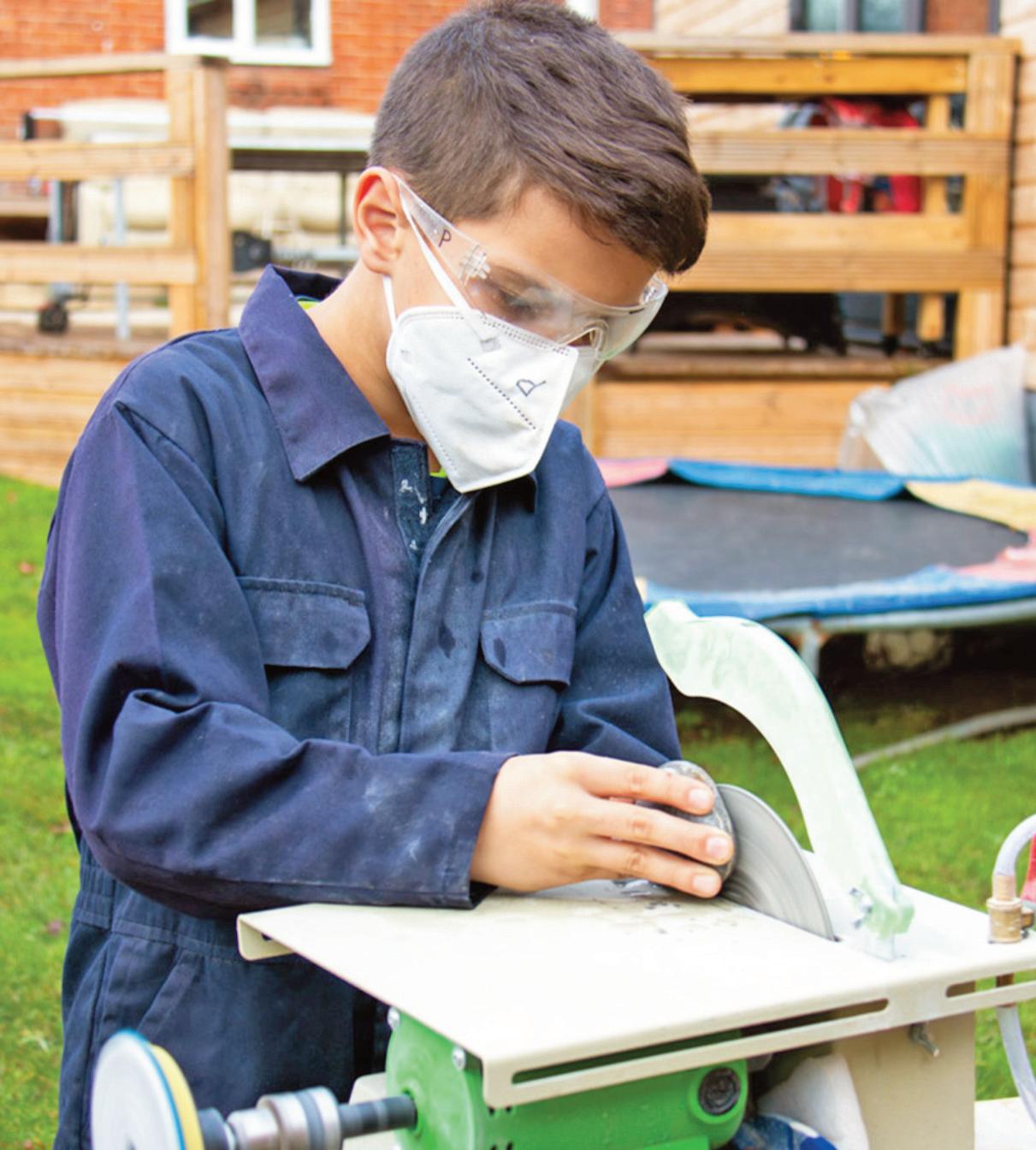

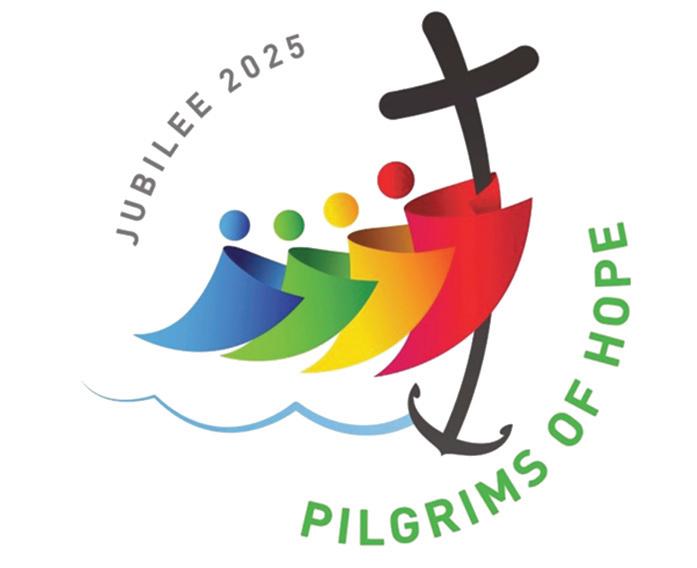
catholicprisonministries.org
The 2025 Jubilee Year, proclaimed by Pope Francis as a “Jubilee of Hope” through his papal bull Spes non confundit (Hope Does Not Disappoint), represents one of the most significant spiritual celebrations in the Catholic Church. The Jubilee officially began with the opening of the Holy Door of St. Peter’s Basilica on Christmas Eve 2024 and will continue until January 6, 2026.
What makes this Jubilee particularly extraordinary is the unprecedented opening of a Holy Door at Rome’s Rebibbia Prison on December 26, 2024—the first time in the history of Jubilee years that a Holy Door has been opened within a prison. This revolutionary act signals the Church’s radical commitment to including those on the margins of society in its most sacred celebrations.
Pope Francis designated December 14, 2025, as a special “Jubilee for Prisoners,” culminating the year with a specific focus on the millions worldwide who are incarcerated, detained, or awaiting execution.
The last major event of the Holy Year will be the “Jubilee of Prisoners” scheduled to take place on December 14, 2025. This date will serve as the culmination of the year-long focus on prison ministry and incarcerated persons. This event will likely include prisoners from various countries who have been granted temporary release to participate, along with prison ministry volunteers, chaplains, and advocates from around the world.
The December 2025 Jubilee of Prisoners aims to:
• Celebrate Human Dignity: Affirm the inherent worth of every person, regardless of their circumstances
• Promote Healing: Provide opportunities for reconciliation between offenders, victims, and communities
• Advocate for Justice: Call attention to systemic issues in criminal justice and prison conditions
• Support Reintegration: Emphasize the importance of helping former prisoners rebuild their lives
• Strengthen Ministry: Encourage and expand prison ministry programs throughout the Church
Pope Francis called on governments worldwide to undertake initiatives to restore dignity to prisoners that “go hand in hand with a concrete commitment to respect for the law.”
The pope’s visit began with a solemn ritual as he stood from his wheelchair to knock six

times on the bronze Holy Door of the prison chapel, the “Church of the Our Father.” The church was filled with about 100 inmates as well as police officers, chaplains, and volunteers. During the pope’s homily, Francis spoke directly to the prisoners, emphasizing how one of the graces of the jubilee is “to open hearts to hope.” “Do not lose hope. Hold on to the anchor of hope,” Pope Francis underlined.
Breaking Down Barriers
The decision to open a Holy Door in a prison represents a fundamental shift in how the Church approaches those on the margins of society. Traditionally, Jubilee pilgrimages required travel to Rome and access to the major basilicas. By bringing a Holy Door to prisoners, the Church acknowledges that geographic and social barriers do not prevent anyone from experiencing God’s mercy.
Paolo Impagliazzo, secretary-general of the Catholic Community of Sant’Egidio, who has served as a volunteer in prison ministry at Rebibbia for 20 years, emphasized that this moment reminds us that prisoners are not “confined to their mistakes.” “They are a part of a journey, of a Christian journey together with the other Christian people all over the world.” This perspective reflects the Catholic understanding that every person, regardless of their past actions, retains their fundamental dignity as a child of God.
Model
The extraordinary gesture was something Pope Francis was very keen to make, and underlines the importance and space given to
caring for prisoners and their social reintegration in the Bull of Indiction of the Jubilee. The opening of the Holy Door at Rebibbia serves as a model for the universal Church, encouraging dioceses and parishes worldwide to prioritize prison ministry and the pastoral care of incarcerated persons.
The Church’s inclusion of prisoners in the Jubilee celebration has several practical implications:
• Liturgical Equality: Prisoners have access to the same spiritual graces and indulgences as any other Catholic during the Jubilee Year.
• Pastoral Priority: Prison ministry is elevated from a specialized apostolate to a central concern of the Church’s mission.
• Social Integration: The focus on reintegration programs demonstrates the Church’s commitment to helping former prisoners rebuild their lives.
• Advocacy: The Church’s public attention to prison conditions encourages reform and improved treatment of incarcerated persons.
The impact of the Jubilee’s focus on prisoners has already been seen globally. Taking up the spirit of the recently inaugurated Holy Year 2025, the Cuban government announced the release of 553 people currently serving prison sentences, inspired by Pope Francis’s emphasis on mercy for prisoners during the Jubilee Year. This demonstrates how the Church’s prophetic witness can influence government policies and create real hope for imprisoned persons worldwide.
As we implement the vision of the 2025 Jubilee of Hope, we must remember that we do not work alone. Christ himself was counted among criminals, crucified between two thieves. The risen Lord bears the wounds of his passion as signs of victory over sin and death.
In serving those who are imprisoned, we serve Christ himself. In working for justice and mercy, we participate in God’s own work of redemption. In offering hope to the hopeless, we become instruments of the very hope that does not disappoint. The prisoners at Rebibbia heard Pope Francis say: “Do not lose hope. Hold on to the anchor of hope.” The same message echoes to every person involved in prison ministry: our hope is not in human institutions or programs, however necessary they may be. Our hope is in the God who sets captives free, who makes all things new, and who calls us to be ministers of reconciliation.
This Jubilee Year is our opportunity to answer that call with renewed commitment and prophetic courage. The men and women behind bars are waiting. Their families are waiting. The victims of crime are waiting. The community is waiting. The question is not whether we are qualified for this ministry—none of us are. The question is whether we are willing to respond to the Gospel imperative: “I was in prison, and you visited me.” May this Jubilee of Hope be the beginning of a new chapter in the Church’s commitment to all who are imprisoned, remembering that in God’s kingdom, the last shall be first, the forgotten shall be remembered, and the condemned shall find redemption.
The conference highlighted Gaza's unrelenting trauma, the need for ceasefire and the urgency of speaking out
On Saturday, 8th November, I attended the Gaza Day Conference: A Mental Health Conference for Palestine - Living Through the Unimaginable: Witnessing and Responding to the Genocide in Gaza
We heard from Dr Yasser Abu Jamei, Director General of the Gaza Community Mental Health Program, who asked the profound question: "How do you provide mental health care during a genocide?" His answer was both defiant and compassionate: "You do it by refusing to accept that any people deserve to live this way." He reminded us that Palestinians are not resilient by choice - they are resilient because they have no other option.
The Palestinian speakers conveyed that without a true ceasefire, psychological healing remains impossible. People in Gaza continue to live in a constant state of fear, unable to begin processing their trauma while the violence persists.
The atmosphere in the conference room was deeply emotional; many participants were moved to tears as we confronted the psychological reality of life under genocide. To
label this collective experience as PostTraumatic Stress Disorder (PTSD) would be neither accurate nor respectful - as one speaker said: "The experience of genocide is beyond words."
Part of the discussion centred on language and silence - on how silence can carry different meanings, and how, even though the Arabic language has over 20 million words, there are no words to truly describe what has happened in Gaza.
Dr Yoa'd Chanadry, author of Palestine: Colonized Lands, Decolonized MindsNarratives of Trauma and Recovery, showed a photograph of piles of rubbish accumulating in Nazareth, commenting that: "Nazareth has become the dirtiest city within the 1948 borders." The remark was particularly striking given that Nazareth is the birthplace of Jesus, a city now struggling under the weight of neglect and occupation.
In the afternoon, a social worker of Pakistani and Muslim heritage from London presented a powerful paper titled: 'Silencing in the NHS: A Personal Account of Being Disciplined for
Speaking Out About Genocide.' As a mental health nurse working within the NHS, I found this account both shocking and deeply concerning - especially for clinicians who feel an ethical duty to speak out against injustice. The ensuing discussion included a collective plea: "We must decolonise our professions."
As the conference drew to a close, one speaker recited the famous poem by Friedrich Gustav Emil Martin Niemöller, the German Lutheran pastor and theologian:
First they came for the Communists
And I did not speak out
Because I was not a Communist
Then they came for the Socialists
And I did not speak out
Because I was not a Socialist
Then they came for the trade unionists
And I did not speak out
Because I was not a trade unionist
Then they came for the Jews
And I did not speak out
Because I was not a Jew
Then they came for me
And there was no one left
To speak out for me.
At a time when words often fail, psychoanalysis offers a space to think, to feel, and to bear witness - to hold what is unbearable without turning away. It reminds us that the work of listening, of making meaning from pain, is itself an act of resistance and

humanity. In facing the unimaginable, psychoanalysis helps us stay human.
Leaving the conference, I felt a deep sense of urgency - a recognition that silence, in the face of such suffering, is itself a form of complicity.
The event, organised by Psychoanalytic Voices for Palestine, took place at Birkbeck, University of London.
Siobhan Bryant is a Registered Mental Health Nurse and Psychodynamic Counsellor. She has many years of experience working within the NHS and currently works in a specialist therapeutic community hospital in London.
Sixteen hundred years ago, St. Augustine was credited with saying, “He who sings, prays twice.” Today, scientific research shows that he who sings, performs, or listens to music also enriches and strengthens his brain, according to Catholic neuroscientist Kathlyn Gan.
Not only that, but sacred music may produce even more beneficial effects.
Gan, who leads a research laboratory at the University of Toronto, delivered the uplifting news to about 50 people at an Oct. 30 talk at St. Francis de Sales in Burnaby, Ontario.
In her hour-long presentation “The Neuroscience of Sacred Music,” Gan, a former choir director and accompanist, described how research showing that music can be part of a healthy lifestyle that helps counter the mental decline that accompanies aging.
Music can also help prevent the onset of Alzheimer’s disease, which, in up to 95% of cases, can be driven by nongenetic factors, including obesity, high blood pressure,
smoking, deafness, brain injury, and social isolation.
Not only does music stimulate the brain in special ways, but it also fosters healthy social connections when performed in a group setting, said Gan, currently a liturgical musician in the Archdiocese of Toronto.
Speaking with Vancouver based publication, The B.C.Catholic, she said music is encoded and integrated by multiple brain regions, stimulating neural pathways that regulate memory, movement, reward, emotion, and empathy.
“Based on those effects, music can help us keep our minds active and foster social connections, which in turn can help us mitigate the risk of Alzheimer’s disease,” she said.
Gan, who earned her doctorate at Simon Fraser University in Burnaby and did postdoctoral studies at Stanford University in California, said music therapy is widely used as part of a holistic treatment approach to improve behavioral issues and encourage social connections during mid- to late-stage Alzheimer’s.
Gan noted that the CBC recently reported that doctors in Montreal have partnered with the city’s symphony orchestra to prescribe music as medicine.
“Physicians will get prescriptions that they will give to patients,” said Mélanie La Couture, CEO of the Montreal Symphony Orchestra. “The patients will call us, and we will give each patient that calls us two tickets for free.”
Even more benefits could conceivably come from listening to or singing sacred music, which Gan defines as any music — from chant and classical to jazz and gospel — that contributes to the solemnity and beauty of the Mass, promotes deeper reflection on the scriptural readings and homily, and glorifies God.
That said, it will be challenging for scientists to prove sacred music’s special benefits because of listeners’ or musicians’ subjective perceptions of music and their varying depth of spiritual formation and understanding, Gan said.
At the very least, however, listening to or performing sacred music helps a person grow
in faith and to love God, she said in her presentation.
Along with the three degrees she earned at SFU, Gan also holds an associate diploma from the Royal Conservatory of Music and is an accomplished classical pianist who shares her talent and faith in churches and the wider community. These outings include performances with her piano students at retirement homes and long-term care facilities, as well as playing piano in musictherapy and spiritual-care programs.
She views her music ministry as a form of prayer that challenges her not only to recognize scriptural themes and imagery but also to communicate them “in a manner that honors the historical context of the hymns and shares my own spirituality and lived experience.”
Her studies and ministry have not only deepened her appreciation for the human mind’s complexity and capacity for mirroring Christ’s humility, compassion, forgiveness, and love, but they’ve also “encouraged my spiritual growth and enriched my faith,” she said.
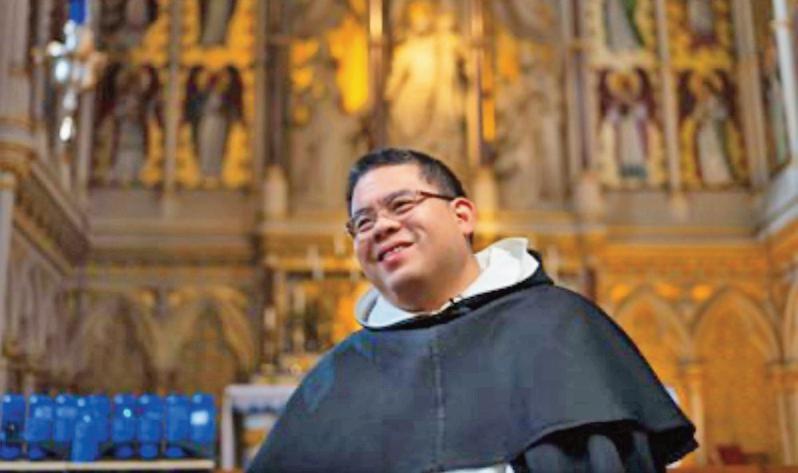
rcsouthwark.co.uk maybe a little bit dead. I think we need to bring it to life again by first meditating on the Word of God”.
The rosary is a powerful tool for evangelisationwith Fr Lawrence Lew
The rosary, Fr Lawrence Lew O.P. said, “is a tool for evangelisation” because at the heart of the rosary is a “proclamation that God is with us. It’s a proclamation of Emmanuel - God’s abiding presence with us”.
In a video interview, Fr Lawrence, the Dominican Promoter General of the Holy Rosary, said the rosary: “in a nutshell is about God becoming man, redeeming us in the flesh so that man can become God. The Joyful Mysteries are about the marvel of the Incarnation, the Sorrowful Mysteries are about the wonder of our redemption in Christ, and the Glorious Mysteries are about our gift of eternal life that Jesus has won for us and gifts to us”.
The rosary is Christocentric
The rosary therefore, Fr Lawrence explains, is “all Gospel centred. It’s all about Jesus Christ”. This is because the rosary is a meditation on the Scriptures and “the Scriptures are at the core of what makes the rosary come to life. It’s the soul of the rosary”.
Fr Lawrence said “for many people, the rosary maybe has become boring, repetitious, and
This is easily achieved, he adds, as “the rosary is entirely Gospel centred and Christocentric, it has at its core the mystery of salvation in Christ God becoming man so that man can become God”.
People will often say they are too busy for prayer, to read Scripture or to pray the rosary, but “no matter how busy people are, they always find time to scroll through their social media feeds”, Fr Lawrence said. This can be “when we’re standing at the bus stop or waiting for our food”, wherever you look people are “always scrolling through Instagram”.
But these are what Fr Lawrence calls “golden opportunities of the day. They’re graced moments. So don’t squander those grace moments by scrolling through social media and getting riled up”, he said, and instead “pick up the rosary and pray one decade a time”. Stop letting these moments in our day “become lost moments, fill them up with the rosary”.
Pray the rosary in public
Fr Lawrence said, “the rosary is best prayed with movement… it’s the best prayer to use
when you’re travelling”. Praying when travelling helps us to evangelise.
That is why Fr Lawrence said “don’t be afraid to take out your rosary beads and pray on the bus, the train, the underground. It’s a great way of evangelising, it’s a great conversation starter... it’s a way to help people at least begin to think about God and the things of God”.
History of the rosary
According to legend and stories, Fr Lawrence explains, it was around 1206 that St Dominicthe founder of the Dominican Order - received the Holy Rosary from Our Lady. But, “historians always get in the way of a good story, Fr Lawrence said, as “there isn’t any written evidence that St Dominic ever received the rosary from Our Lady”.
However, what we do have in the earliest documents about the life of St Dominic, Fr Lawrence added, “is something about how he prayed. It’s called the 9 ways of prayer of St Dominic, written sometime in the 1250s”. St Dominic meditated “on the Scriptures as he walked the length and breadth of Europe and essentially that’s what the rosary is: meditation”.
Praying with beads goes back even further, with the Desert Fathers in the 4th centurywho were early Christian monks who lived in
monks began to say 150 Haily Marys.
But it was the Dominican Order, Fr Lawrence stated, that split the Hail Marys into sets of ten and united them to the mysteries of salvation – which is how we pray the rosary today.
Fr Lawrence was interviewed by the Archdiocese of Southwark to promote the Agency for Evangelisation and Catechesis’ rosary for evangelisation, for which Fr Lawrence provided a reflection.
The rosary for evangelisation also has a reflection from Archbishop John Wilson, who said: “As you pick up this booklet and your rosary, I invite you to pray for your family, f riends, and neighbours; for your parish and local community. Pray that the love and hope of the Lord Jesus will fill our churches, schools, homes, shops, streets, and stations; our villages, towns, and boroughs, the quiet corners and busy centres of our Archdiocese”
You can watch the full video interview by scanning the QR code right.

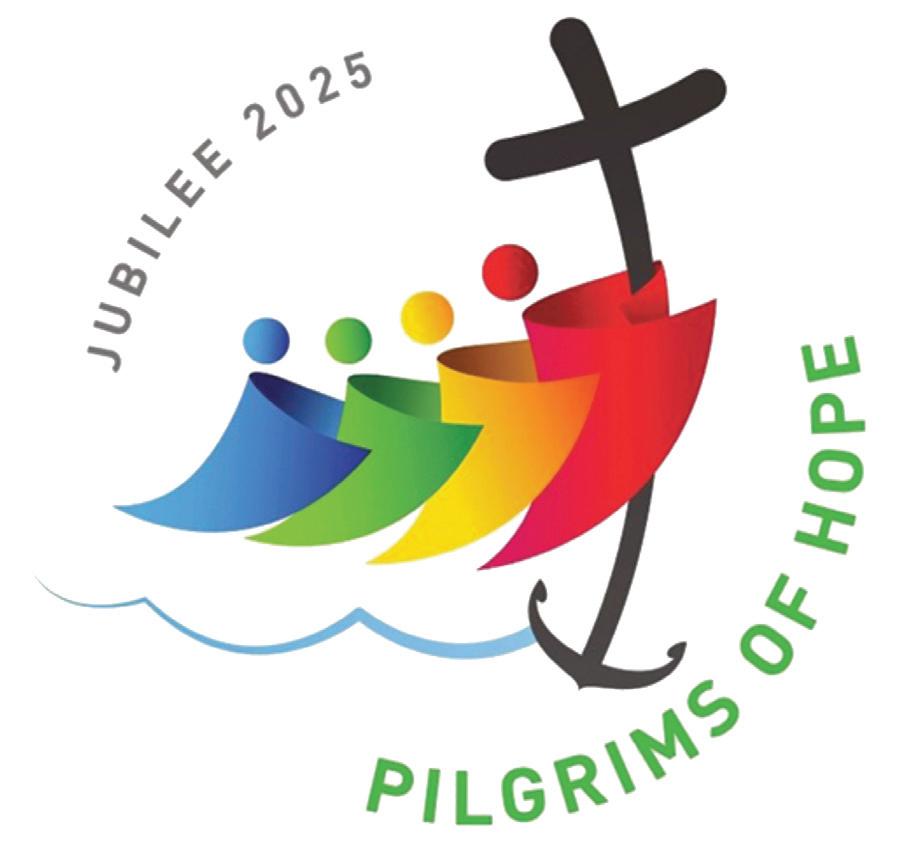
dioceseofsalford.org.uk
Caritas Salford has prepared a resource to help parishes, schools and individuals respond faithfully to the pressing realities of poverty in our communities
Sunday 16 November 2025 marked the ninth World Day of the Poor, which Pope Leo has centred on the theme: “You are my hope.”
This theme challenged us to see Christ in those experiencing poverty and to walk alongside them with dignity and love. Also, in his first Apostolic Exhortation – Dilexi te (I have loved you), Pope Leo has urged the Church to renew its commitment to the poor by showing Christ’s love in concrete acts of solidarity, justice, and service.
The need is urgent.
In Greater Manchester and Lancashire, more than 333,000 children are living in poverty today.
A recent report on child poverty in our Catholic schools revealed that more than 95 per cent of respondents had seen an increase in the number of children affected in the last three
years, with 35 per cent reporting a significant rise.
This Jubilee resource has been compiled to:
n Inspire prayer and reflection, rooting our action in the Gospel and Catholic social teaching
n Offer practical ideas for parish action, from small first steps to larger initiatives.
n Signpost to Caritas Salford and other local services that provide direct support.
n Share stories and case studies of hope from within our communities.
n Encourage advocacy and campaigning, so together we can address the causes of poverty as well as its symptoms.
Our vision is for a society of justice and equality, where the voices of those experiencing poverty, disadvantage, or discrimination are heard, valued, and acted upon—so that all may live in peace and dignity.
Among history’s most loved figures stands St Nicholas — not for titles, power, or wealth, but for a life lived in extraordinary kindness. Born in the 3rd century in Patara, he grew up witnessing struggle and hardship, and rather than turn away, he chose generosity as his compass. The loss of his parents left him with substantial inheritance, yet instead of keeping it, he devoted his life to helping others. He gave quietly, without expectation or recognition — a lesson the world still strives to learn today.
Legends tell of St Nicholas secretly delivering dowries to three sisters who faced a future of poverty. They speak of him providing food during famine, freeing wrongfully condemned prisoners, and staying close to those society most easily forgot. These stories endure not because they sound magical, but because they reveal the depth of ordinary compassion — the kind of compassion that recognises suffering and acts to ease it.
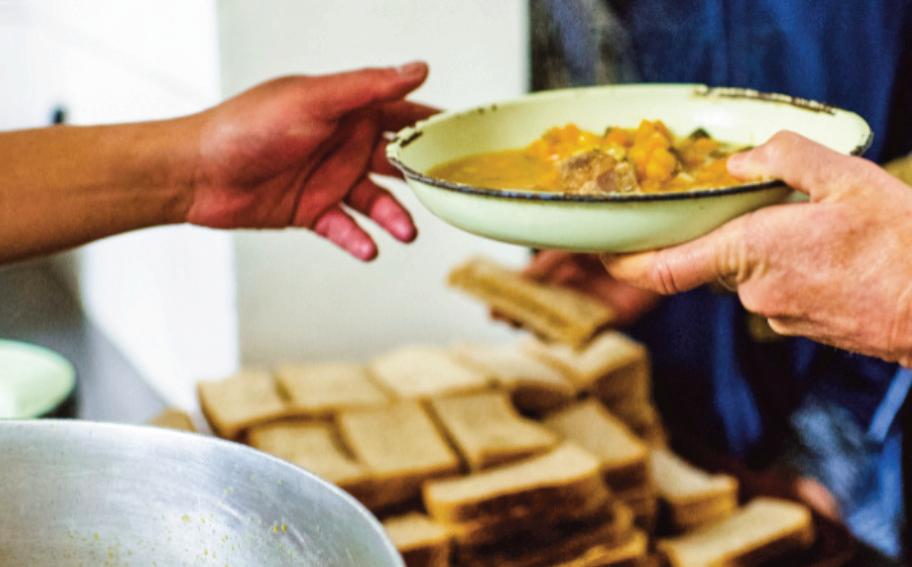
We hope this resource will be a helpful companion during this Jubilee Year and beyond, enabling parish communities to put faith into action with hope and courage.
God of love and compassion, We bring before You all our brothers and sisters who live with the many faces of poverty: Those without food, warmth or safe housing; Those burdened by debt, insecure work or illness; Those who are lonely, excluded or made to feel that their voices do not matter. We pray for parents, carers and families striving to give their children hope for a better future; For older people who feel forgotten; For refugees and migrants seeking safety and dignity;
Amen

For those who struggle in silence with mental health challenges or addictions. May Your Holy Spirit strengthen and encourage them, Helping them to know that they are loved, valued and never alone. Bless all who walk alongside them—parishes, charities and communities of goodwill— So that together we may open pathways out of poverty and build a society rooted in justice and peace. We make this prayer through Your Son, Our Lord Jesus Christ, who became poor for our sake so that we might know the riches of Your love.
Over time, St Nicholas became a symbol of hope across continents and cultures. His spirit ignited traditions of giving during winter, when nights are long and cold and kindness matters most. Through centuries he transformed into the joyful figure many now recognise at Christmas, yet the heart of his legacy has always remained the same: generosity is powerful, dignifying and world-changing.
In a world that can feel overwhelmed by inequality, conflict, and fear, the example of St Nicholas invites us to go back to the basics — see one another, care for one another, and give not from obligation but from love. His life teaches us that every silent act of kindness, every hand extended, every burden shared can ripple much farther than we realise.
The story of St Nicholas isn’t just history. It’s an invitation — to believe that compassion is still the most transformative gift we have.
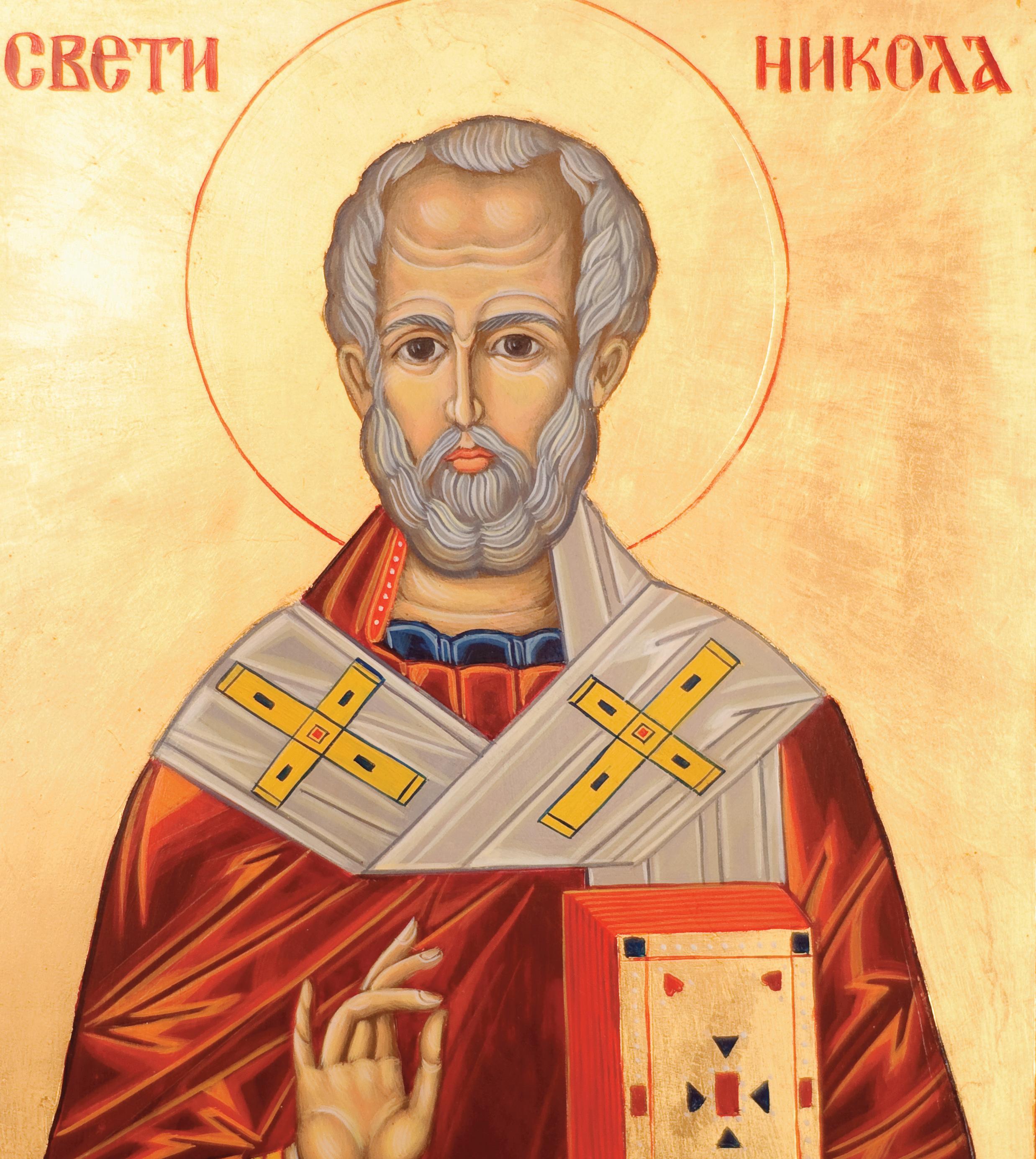
There was standing room only at St Martin in the Fields, Trafalgar Square, last Thursday, for this year's annual Service of Commemoration for people who have been homeless, who have died in London in the past year
This year's theme was 'Refuge' and the words of Jesus in Matthew 11:18 - 'Come to me all you that are weary and are carrying heavy burdens, and I will give you rest.'
In this moving service, the names of 150 people were read out - another 58 unnamed people who died were also remembered. The congregation included friends and relatives of the deceased as well as staff and volunteers of the various homeless charities.
Organised by St Martin in the Fields, The Connection at St Martin's, Housing Justice and the Museum of Homelessness, the service began with John Bell's 'Take me, take me as I am'.
In his introduction, Rev Richard Carter pointed out the memory blanket' on the altar, made up of 1,474 squares - to remember each person who died homeless in 2023, as recorded by the Museum of Homelessness Dying Homeless Project. He said the blanket on had been assembled by The Connection at St Martin's, from squares knitted and sent in by people from across the UK. It was sewn together in Charing Cross Station, right in the heart of London's homelessness crisis, by a team of volunteers, Connection staff and people who have been homeless.
Rev Carter noted that some of the people who died came from the UK but others had come from further afield. These people were originally not homeless, he said. They had come here with hope, looking for a home.
Rev Carter pointed out that the average age of death for a homeless person in the UK now is just 45 for men and 43 for women - compared to the national averages of 79 and 83, respectively.
After hip hop artist and poet Surfing Sofas read his powerful piece: 'Til We Meet Again' accompanied by Camilo Tirado, there was a succession of readings of the names of those who died.
Monica Zerbin from Haringey Council read the first group and gave a tribute to Tobiasz Cielielski. She said: "He came with hope. A man
from Poland. Gentle eyes. Hands for building. With a quiet dream of life worth living. But it didn't work out. After one accident, everything was lost. There was no one to support him. He walked through cold streets … experienced the ache of being invisible. He accepted help with grace. Was never demanding. Never despairing. He dreamed of working again... Tried so hard. But It wasn't to be. We will never forget you," she said.
Lily Stannard from the Connection read the second group of names before a giving a brief tribute to Kelly Jones. "Although we only knew you for a few months we will never forget your unique energy" Kelly had several health problems and had been sleeping rough. Lily said that in spite of her many problems she always showed empathy to others.
The third set of names was read by Duncan Shrubsole from St Martin's Charity, with a tribute to Viki Fox. The final set of names was read by Caroline Allouf from Showerbox with a tribute to Rachel Kirby.
The first scripture reading was Psalm 23: The Lord in my Shepherd - read by Housing Justice. Pam Orchard from the Connection read the second reading - the theme of the service: Matthew 11 : 28-29: 'Come to me all you that are weary and are carrying heavy burdens...'
Rev Lucy Winkett, Rector of St James Piccadilly opened her reflection on this reading by speaking about two items she always has in her pockets - a carved cross, given to her 30 years ago soon after she was ordained. "I sometimes hold on to it when things are difficult and I know that Jesus is with me" she said. The second item was a small stone. "Sometimes I imagine it's the stone that was rolled against the tomb when Jesus died" she said ... the crucifixion and the resurrection,. "But this isn't any stone - it's from the Syrian city of Alleppo which had been destroyed during the war."
Rev Winkett said half of the city of Aleppo has been destroyed and it is the oldest continuously inhabited city in the world. Many Christians gather there in its churches. "But this is a stone from the rubble where many people have died."
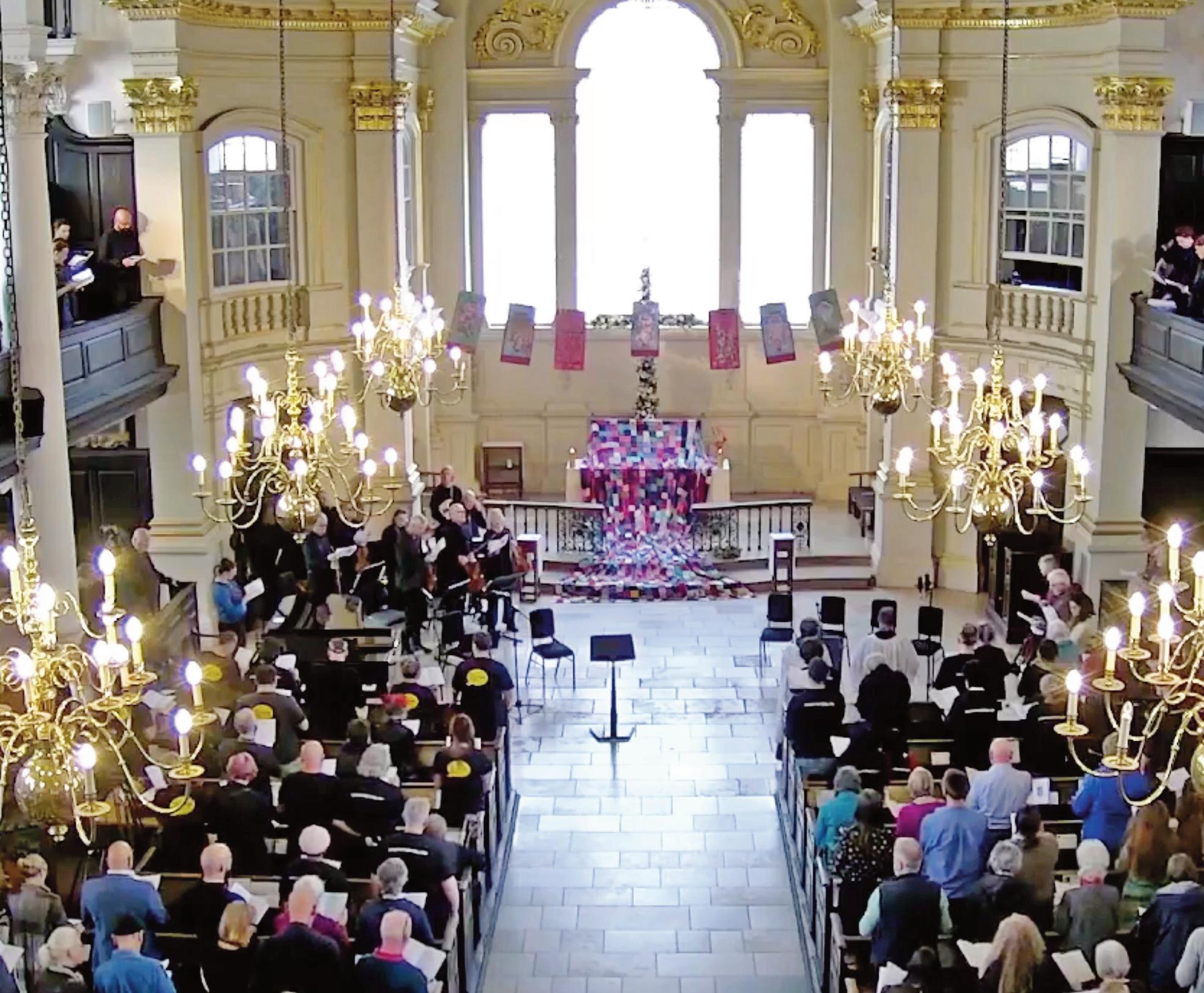
“Its such a privilege to be here this morning and so we welcome one another and we remember all the remarkable people whose stories we've heard this morning but you know to be honest - don't you wish that we didn't need this service?"
"Do we not wish that this church didn't have to be full of people remembering people who have died, who have experienced homelessness?"
Rev Winkett noted that people present had such mixed feelings - on the one hand commemorating the wonderful qualities of the people who died but then also grieving their loss. "And so its a mixture - this service of thankfulness and grief - of joy and rage that this service is even necessary."
She ended by reading the poem: The Heavy Stone, by Averil Stedeford.
My grief was a heavy stone, rough and sharp. Grasping to pick it up my hands were cut. Afraid to let it go I carried it. While I had my grief you were not lost. The rain of my tears smoothed it. The wind of my rage weathered it, making it round and small.
The cuts in my hands have healed. Now in my palm it rests, sometimes almost beautiful, sometimes almost you.
The congregation then took part in the Act of Remembrance, each person coming up one by one silently to receive a card, with an illustration by Kollier Din-Bangura, carrying the name of a person who died homeless in the
last year. We were asked to keep that card and remember that person in our thoughts and prayers all year. As we filed up, Gavin Bryers and the Choir With No Name and Streetwise Opera sang the anthem 'Jesus' blood never failed me yet.'
We settled back in our places to the Choir with no Name singing 'Way Over Yonder' by Carole King.
Streetwise Opera then sang Ombra Mai Fu from Xerxes. Rev Richard Carter led the final prayers before our last hymn - Guide Me Oh Thy Great Redeemer.
All present were invited to lunch and refreshments in the St Martin's Crypt.
St Martin in the Fields is one of the most famous churches in London. Besides regular services, it has a wonderful programme of concerts, a Crypt Cafe, gift shop and lecture series. At its day centre, The Connection at St Martins, it offers advice and support for people who are rough sleeping, connecting each person with skilled staff who understand the complexity of their situation and who listen, then help.
Jo Siedlecka
To donate to St Martins scan the QR code right.
To watch the recording of the service scan the QR code below.


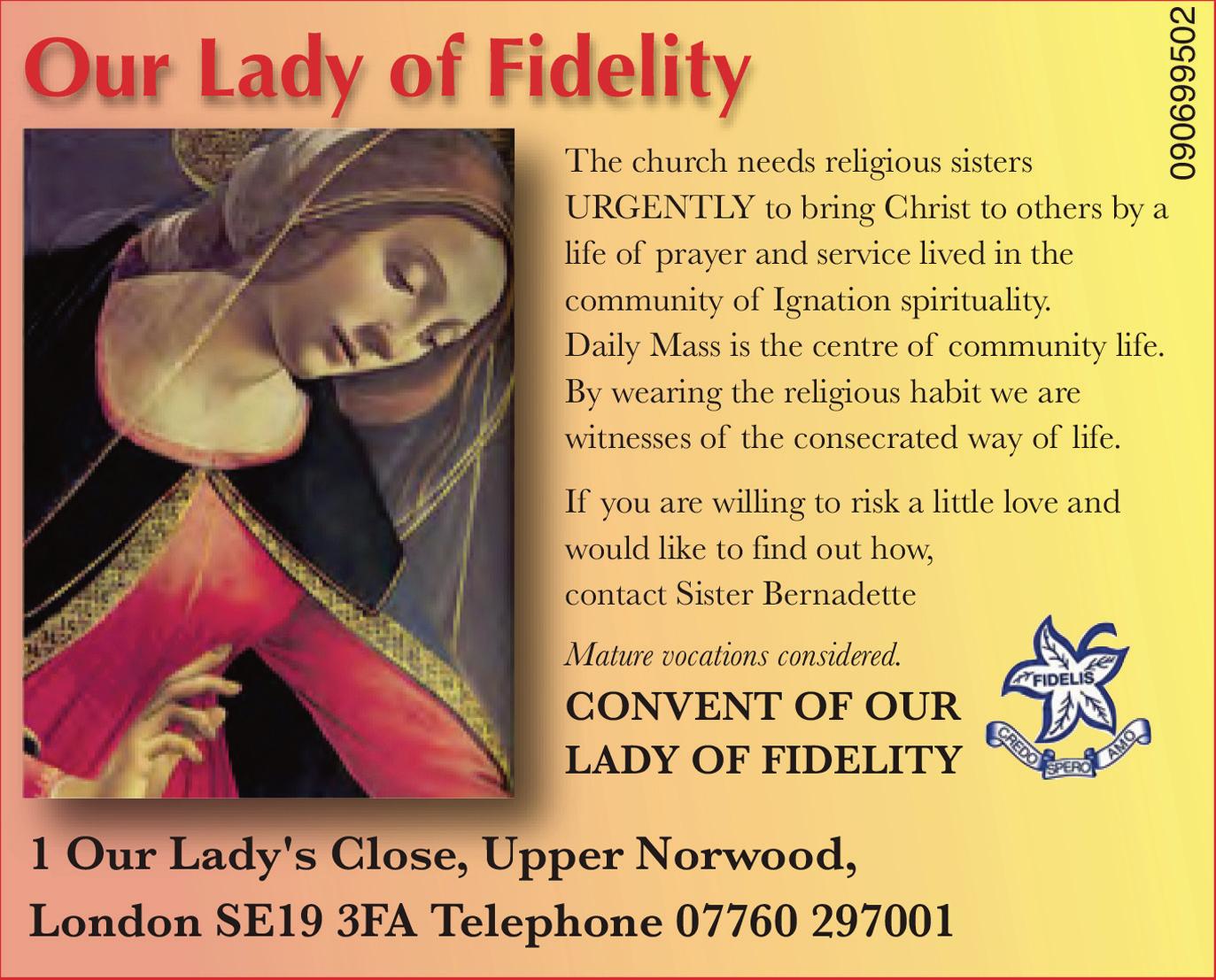

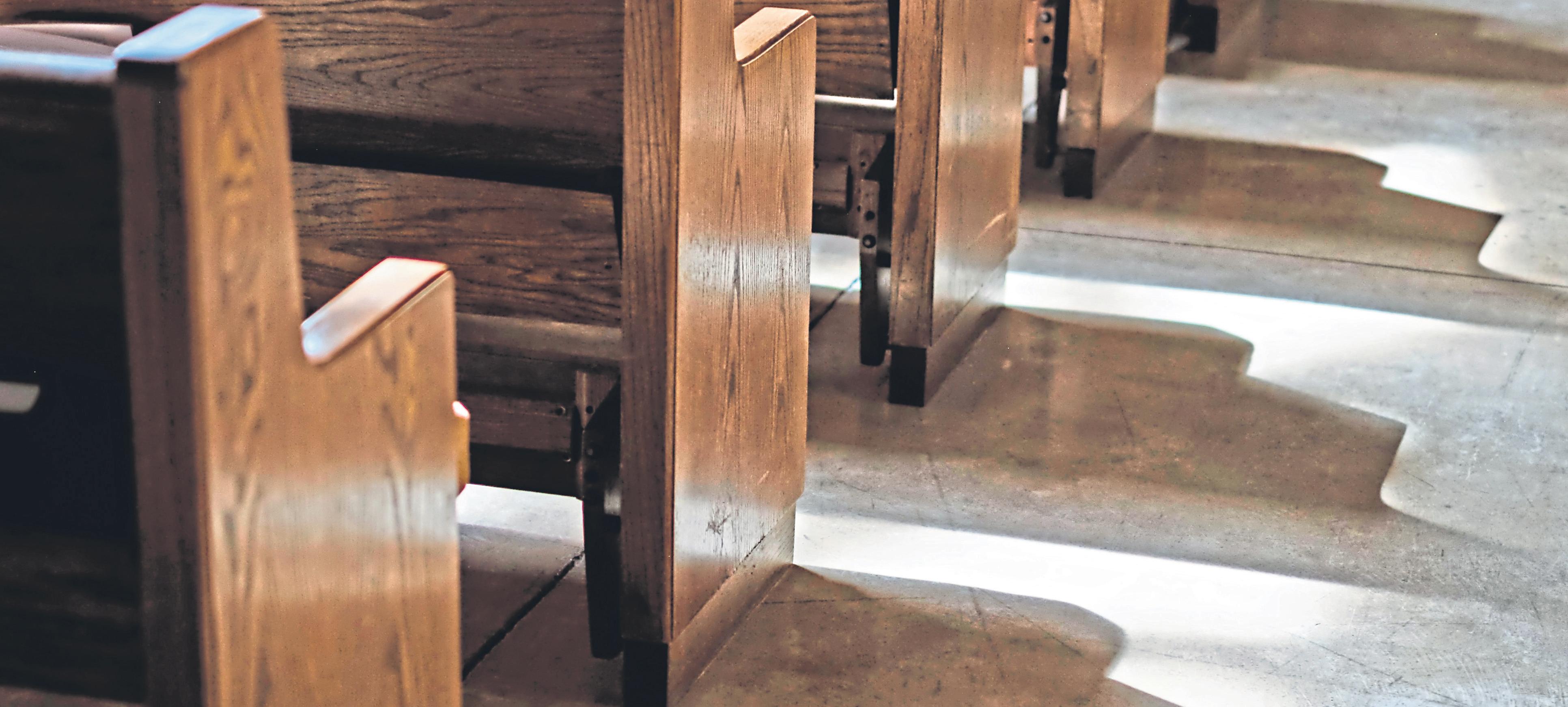

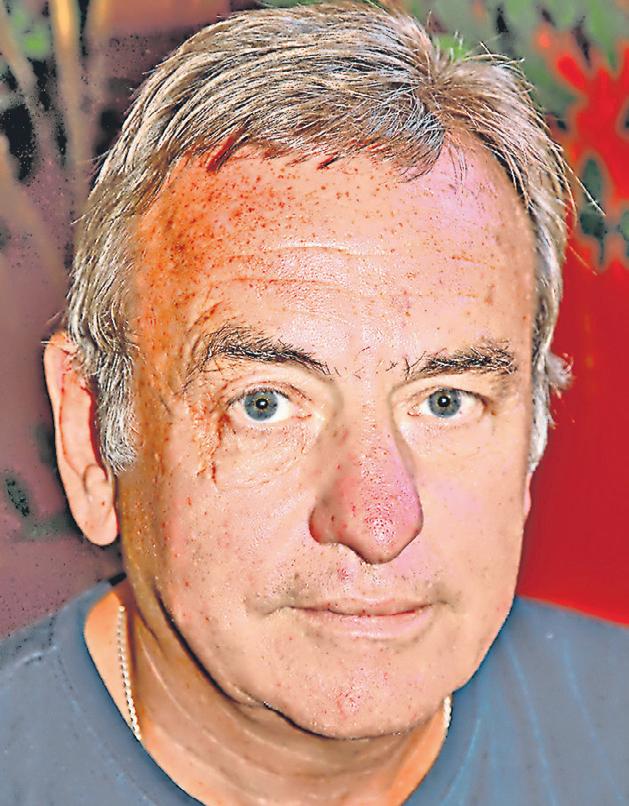
Dr Jay Kettle-Williams
There were two Latin masters at the school I went to. They used to amuse themselves during breaks and at the school’s ‘dinner time’ by talking in Latin to each other. They had different accents – one had graduated from Oxford, the other from Cambridge – but neither accent, I suggest, would have been anything like that spoken in the Forum of Ancient Rome.
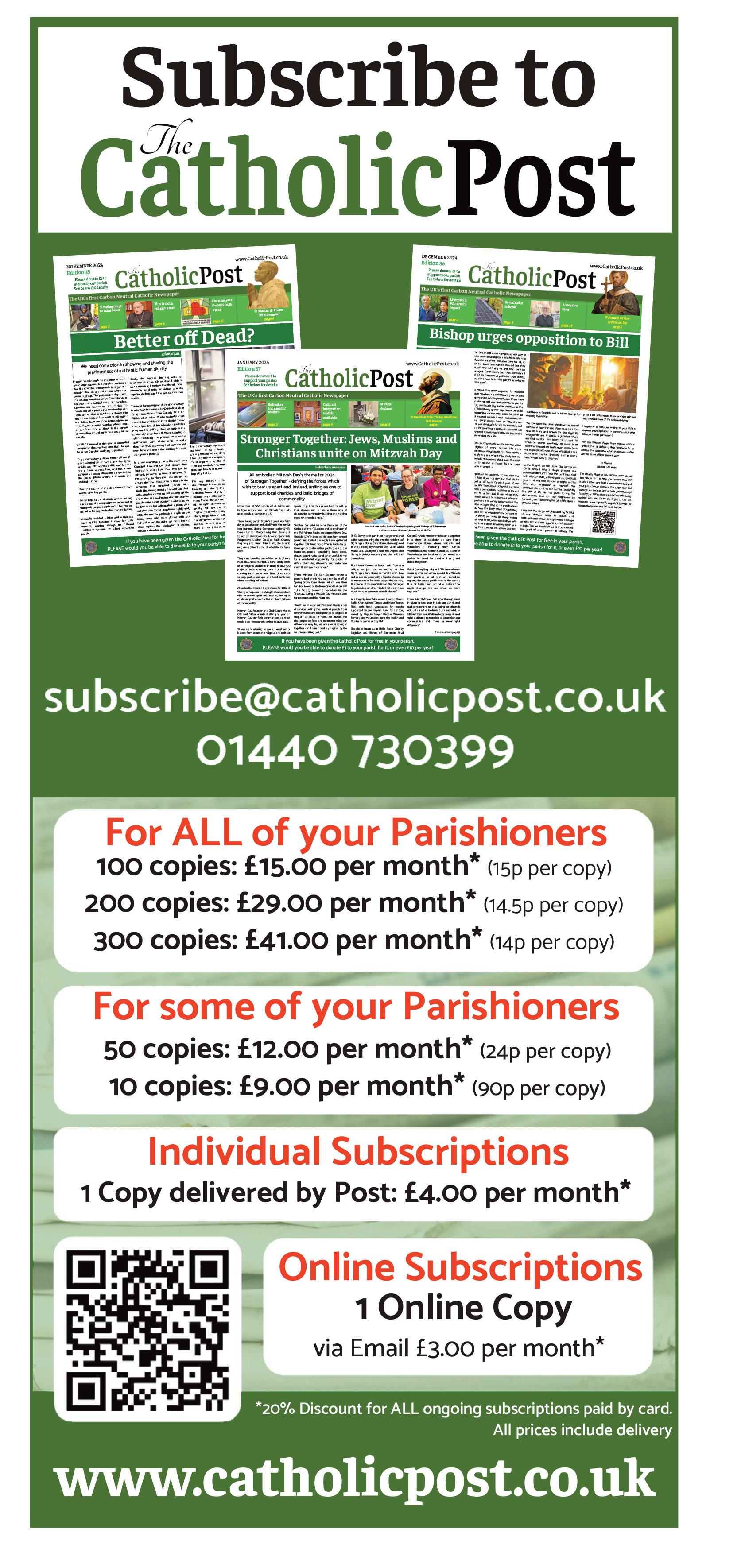





honour something deemed pleasant which has happened. Celebrations are something we all like to be involved with, to be involved in. They might come following marriage, a birth, a christening, a birthday, success in our work, in our studies, in our business or whatever event that brings happiness.
The event that brings us happiness at this time of the year is the birth of Jesus. However, when it comes to the twelve days of Christmas (starting on 25 December), I hold no truck with what I consider excessive commercialisation excessively extended, teased out over months, normally with little or no regard for the raison d’être. Not that I’m a kill-joy.




















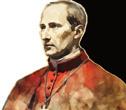




One of the things that they would regularly drum into us at school was that ‘Rome [apart from not being built in a day] was born in Greece, and Greece was born in Crete.’ But like so many things drummed into us at school, I never appreciated their worth until much later in life. So I was particularly alerted to a recent comment by Giorgia Meloni who said: ‘I believe in Western civilization, which is built on Greek philosophy, Roman law and Christian values.’ That comment by the Italian Prime Minister immediately brought to my mind the inscription bearing the charge in Latin and Greek – complemented by the transcription in Hebrew – pinned above our Crucified Christ (John 19:21 and Matthew 27:37 ref. The Jerusalem Bible). But I’m getting ahead of myself.
Mary’s now giving birth. Jesus - ‘That poor wee lamb!’ as my wife would say - is being put before us in the most humble of presentational devices: a simple manger.
Well, poor wee lamb for sure. He’s not got easy times ahead. And we all know what’s coming down the line.

But this is the time we celebrate His birth. It’s a time for joy, for gratitude and for basic questioning, not that I felt I could answer one person’s question put to me some time ago: ‘Where and when would baby Jesus have been christened?’ Oh, dear! I’ll leave that there.
Yes, this is certainly the time of the year for us to celebrate.
Celebration for us mortals always surrounds a special enjoyable event that we organize to
Then, in similar vein, there’s Fathers’ Day (third Sunday of June). Forgive me but I see that again as commercial overreach, further to the celebration of Mothers’ Day (fourth Sunday of Lent), the day traditionally for honouring one’s mother church and subsequently one’s own biological mother.
No, I’m not a kill-joy. Not at all. I see no problem with anyone’s freedom to celebrate whatever and whenever they like, providing it doesn’t impinge on the freedoms of others.
Take, by way of a further example, the celebrations of 5th November which mark the failure of Catholic conspirators in 1605 to blow up Parliament and assassinate King James I. Ok. But that’s a far cry from the celebrations honouring bloodshed, voicing approval and giving encouragement for innocent folk to be wilfully slaughtered, such as we might witness on our streets from time to time. A thin line, you might say. No, I don’t think so. That line is broad and as broad as it’s long.
I grant you, freedom is an awkward concept to wrestle with. It can be emboldening at first touch. However, we need the wherewithal within us to understand that freedom is not the entitlement nor is it the free will to do whatever we like, to perform and to act in whatever way might take our fancy. We mustn’t forget that, when he’s older, Jesus will be teaching us the Golden Rule (Matthew 7:12,
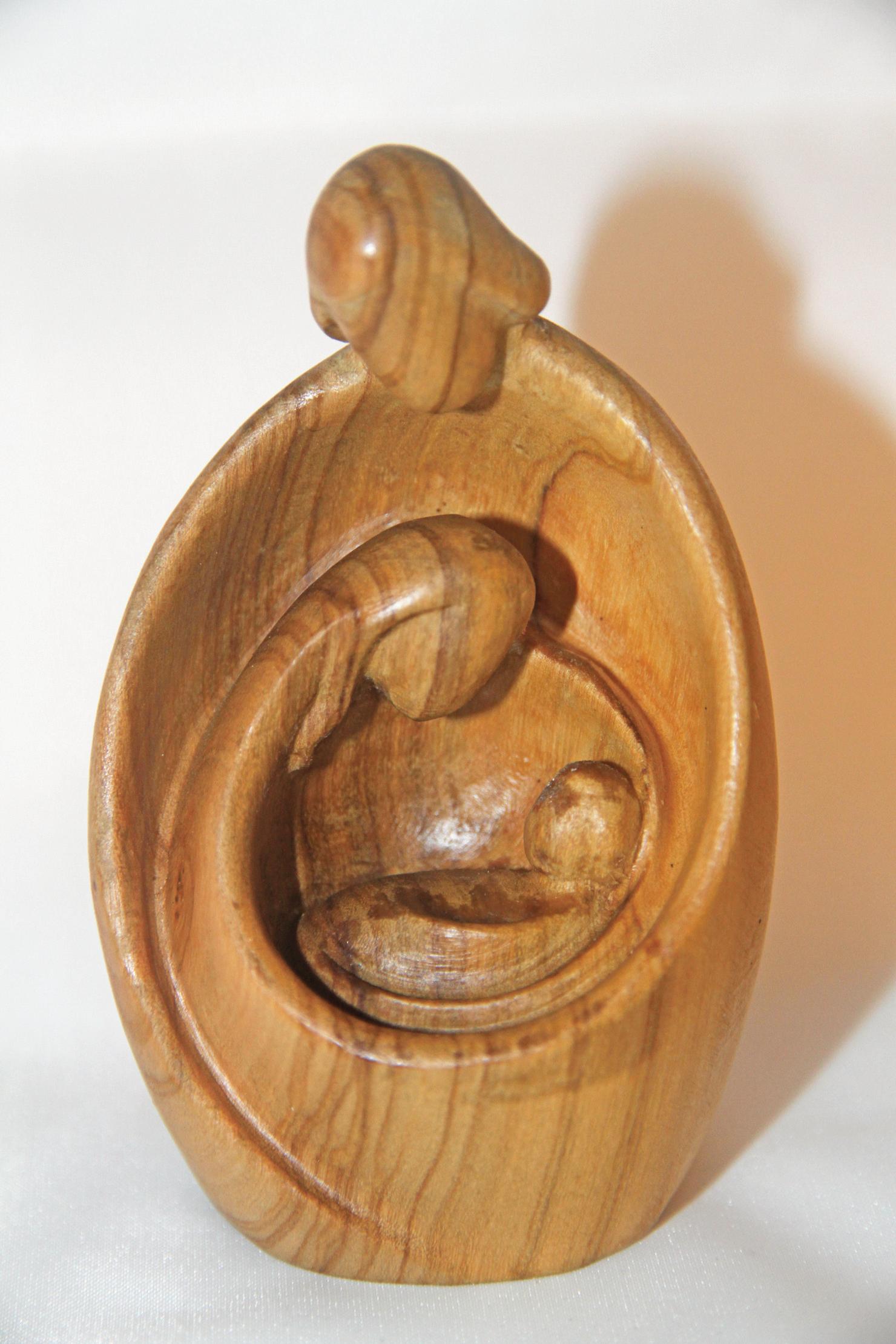
Luke 6:31 ref. JB): ‘Do unto others as you would have them do unto you’.
Nor is freedom the self-indulgence to ever take or feign offence, never to take umbrage, to indulge our own sensitivity. When he’s older, Jesus will be telling us to turn the other cheek (Matthew 5:39 and Luke 6:29 ref: JB).
At this point it just remains for me wish you all a Merry Christmas.
Or in the words of Steeleye Span: ‘Christos est natus … Gaudete!’
Texts/References adapted and/or adopted from http://en.wikipedia.org under the terms of the Creative Commons AttributionShareAlike License 4.0: http://creativecommons.org/licenses/bysa/4.0/; The wording of the song ‘Gaudete’ is taken from the lyrics published by Steeleye Span; Photo ©: Olive Wood Crib Figurine by J L Kettle-Williams

Dr J L Kettle-Williams is an experienced business communications consultant and wordsmith (tutor, writer, translator).
dioceseofleeds.org.uk
More than 100 years after his death, a private soldier commemorated on the St Mary’s Selby Roll of Honour has full recognition for his military service in the Great War, thanks to years of painstaking research by parishioner
Rona Houlton
Leading up to the WWI Centenary, each man named on the St Mary’s memorial plaque was researched so that the parish could honour the men who served, find photographs, and even relatives. Among the names was Emmanuel Joseph Foxton – but no other information was to be found through the Commonwealth War Graves Commission (CWGC). In effect, Private Foxton was an ‘unknown’ soldier, unlisted in the CWGC’s database, and his final resting place was a mystery.
Over several years, Rona’s research produced enough information for the Commission to open a file in 2018, and by 2023 enough was known to include Emmanuel Foxton’s name in the United Kingdom Book of Remembrance. By the following year, searches of local burial registers established that Emmanuel, whose mother seems likely to have been a Catholic, was buried near his father and grandfather in the churchyard at St Helen’s Church in Escrick. Although attempts to find living relatives have so far proven fruitless, by 3 September this year, Pte Foxton’s grave was marked by one of the familiar white headstones denoting a Commonwealth War Grave – and on 6 November, the local Church of England Vicar, Rev Jackie Doyle-Brett, led a Service of Remembrance and Commemoration, with prayers from Fr Anthony Wilson, Parish Priest of St Mary’s in Selby. The service was attended by representatives of The West Yorkshire Regiment with which Private Foxton served (now amalgamated with the Royal Yorkshire Regiment), The Commonwealth War Graves Commission (CWGC), Keith Mather MP, parishioners, and local veterans.
Rona’s research into this ‘lost’ casualty of the ‘War to end all wars’ discovered that Emmanuel Joseph Foxton was born into a farming family on 17 March 1896 and died on 3 January 1919, aged 22, as a direct result of injuries sustained during WWI. As a child he had lived in Selby, before moving to Armley in Leeds with his Mother after his father’s death.

He had enlisted with the Prince of Wales’ Own West Yorkshire regiment on 1 December 1915 and was deployed to the Western Front on 5 January 1917. The Regimental War Diary extracts tell of weeks of bitterly cold weather, insufficient rations, and heavy enemy barrage fire. Gassing incidents were becoming a common feature and resulting in multiple injuries, and it was to this that Emmanuel fell victim and was evacuated from France on 5 March 1917 on Ambulance Train 27. He was discharged on 24 April 1917 and was resident in Hemingbrough when he died as a direct result of his gassing injuries. He was buried in Escrick Churchyard on 7 January 1919.
Attending the service in Escrick to remember Emmanuel Foxton, St Mary’s parishioner Rona said of her labour of love: ‘Many times over the last years I never thought this day would ever come. I send my thanks to all who helped me conclude this achievement and are helping to make this day a fitting one for Emmanuel.’
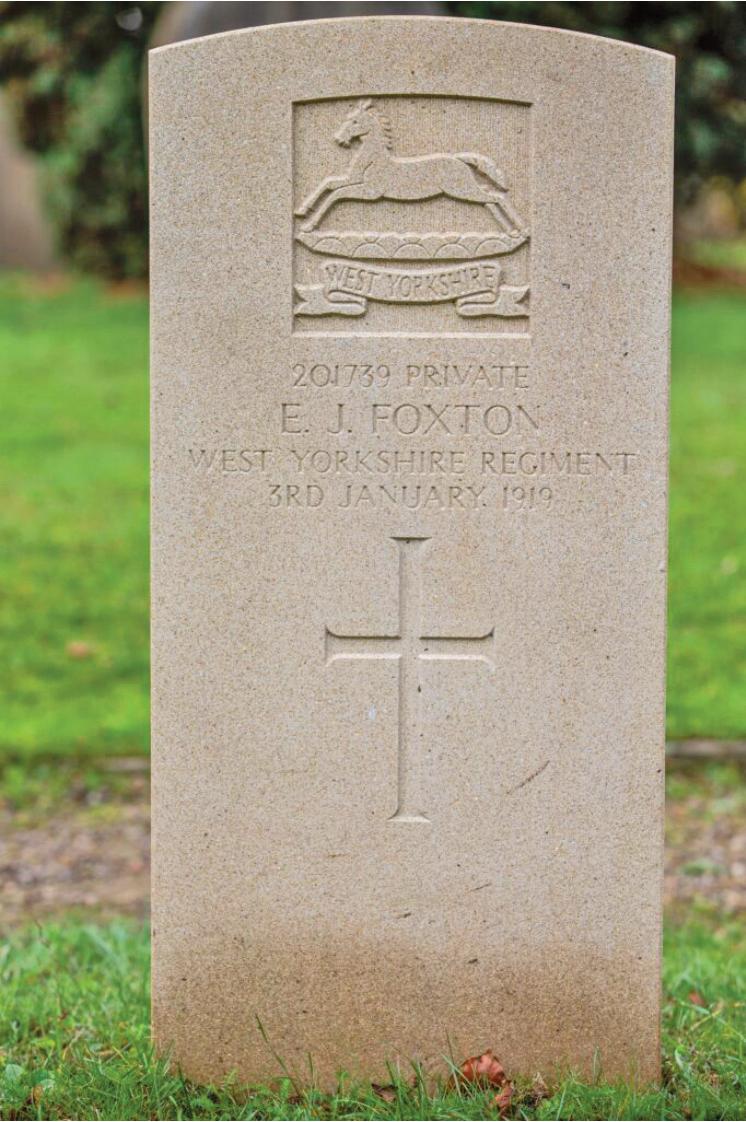



























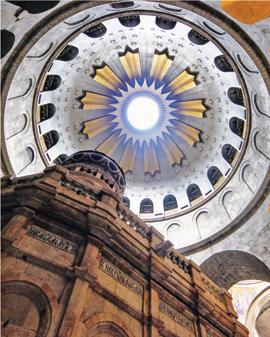




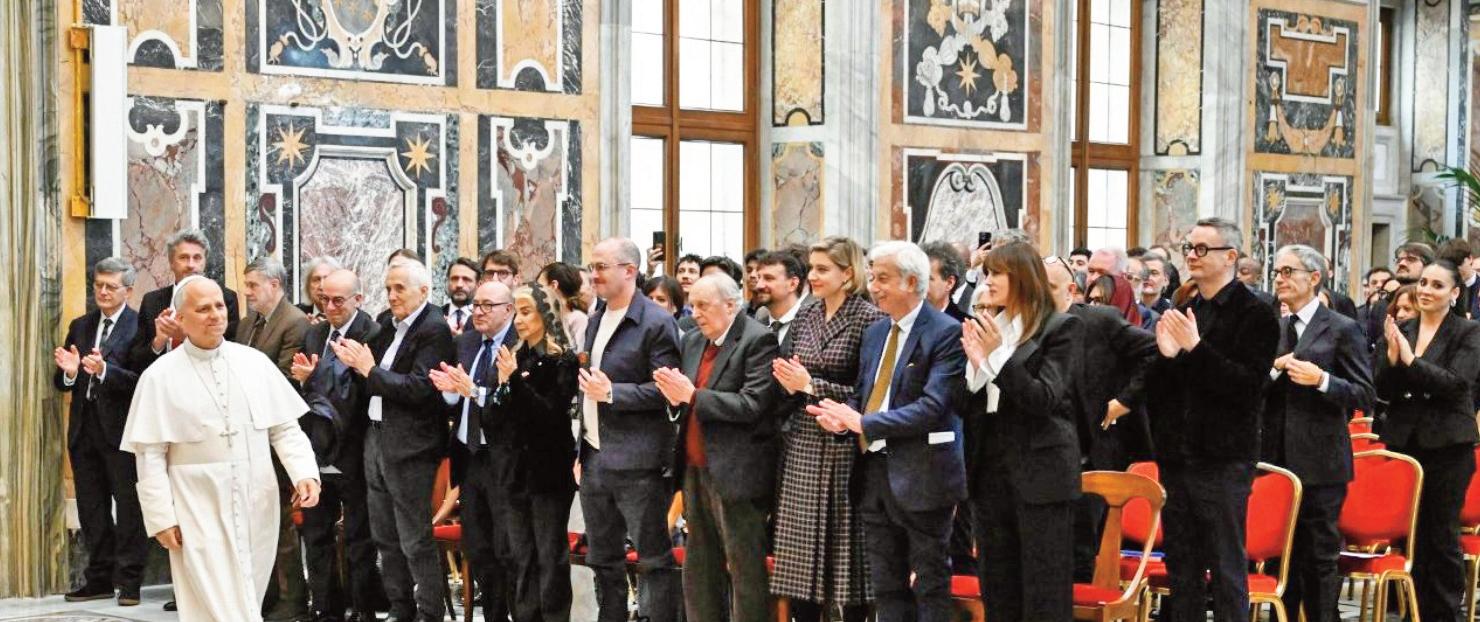
Pope Leo affirmed that cinema is more than just moving pictures, because "it sets hope in motion."
The Vatican's Apostolic Palace was filled with actors, actresses, filmmakers, and script writers on Saturday morning as Pope Leo XIV met with members of the World of Cinema. Nearly 130 years after the first film premiered in Paris in 1895, the Pope highlighted the ongoing importance of film.
Moving from impressing audiences with visual effects, cinema became "an expression of the desire to contemplate and understand life, to recount its greatness and fragility and to portray the longing for infinity."
Pope Leo expressed his gratitude for what cinema represents: "a popular art in the noblest sense, intended for and accessible to all." More than just entertainment, films offer a narrative into people's spiritual journey.
This, he argued, is cinema's greatest contribution to humanity. It helps "audiences consider their own lives, look at the complexity of their experiences with new eyes and examine the world as if for the first time."
This introspection encourages people to rediscover part of the hope essential for a person to live life to the fullest.
Pope Leo affirmed that cinema is more than just moving pictures, because "it sets hope in motion."
Going into a cinema means crossing a threshold, the Pope noted. In the darkness of the theatre, our senses are heightened and our minds become more open to things we might have never imagined.
Productions reach people who are searching for entertainment but are also seeking meaning, beauty, and justice. In a world where screens are ever-present in our day-to-day lives, cinema can be a screen that offers more. Pope Leo stressed "it is an intersection of desires, memories and questions." Our minds are educated and our imagination grows.
Theatre and cinemas, the Pope pointed out, are "the beating hearts of our communities because they contribute to making them more human."
However, these places of cultural importance are facing decline. He highlighted how "art of cinema and the cinematic experience" are in danger.
The Pope encouraged these institutions to not give up, but continue to work to cooperate to preserve the cultural and social value.
Art opens us up to what is possible, he said. Beauty is not an escape from reality, but a call. "When cinema is authentic, it does not merely console, but challenges," explained the Pope. Cinema helps us reflect on the questions deep within our hearts.
In the Jubilee Year, we are invited to move towards hope and the presence of so many artists from around the world is an example of this hope.
The Pope noted how all those present are also pilgrims of hope. However, their journey is "not measured in kilometers but in images, words,
emotions, shared memories and collective desires."
Reflecting on the Church's appreciation for the work of actors, directors, writers, and filmmakers, Pope Leo expressed his desire to renew the friendship between the Church and cinema.
"Cinema is a workshop of hope, a place where people can once again find themselves and their purpose," he argued, calling on everyone present to make cinema an art of the Spirit.
The cinema can be a witness of hope, beauty, and truth-of which the present world is in desperate need. Pope Leo called on all those involved in cinema to uphold cinema's call to bear witness to hope, beauty, and truth.
He challenged them not to be afraid to confront the problems of the world today. "Good cinema does not exploit pain; it recognizes and explores it," said the Pope, adding that this is what "all the great directors have done."
Giving voice to the complex and sometimes dark feelings that we find in our hearts is "an act of love," noted the Pope.
Concluding, Pope Leo XIV pointed out that filmmaking is a communal effort and it requires working together with all types of professionals-from directors and prop masters to electricians and makeup artists.
Everyone, he said, is important to create the final product, since their mixture of gifts and talents help all involved "make their unique charisma shine in a collaborative and fraternal atmosphere."
At the end of the audience, each of the artists had the chance to greet Pope Leo.
Australian actress Cate Blanchett gave the Pope a bracelet and American filmmaker Spike Lee presented him with a personalized basketball jersey of the New York Knicks. Last week, another Hollywood star visited Pope Leo.
Robert De Niro was received by Pope Leo XIV in the Sala del Tronetto of the Apostolic Palace, amidst the Pontiff's busy schedule. The famous two-time Oscar-winning 82-yearold actor is American but proud of his Italian ancestry. He had wanted to conclude his 48hour visit to Rome with a handshake from the Pope, his fellow countryman.
The Holy Father has always enjoyed going to the movies. De Niro was accompanied by five photo people who posed for a photo with the Pope after he presented each of them with a rosary.
De Niro's visit to the Vatican offered an immersion in the artistic beauty of the Apostolic Palace - the perfect finale after yesterday's experience, when, standing on the balcony with Mayor Roberto Gualtieri at the Campidoglio, he was captivated by the splendor of the Imperial Forums.
"Rome is more than a city; it's a living work of art," said the star to the mayor, who presented him with the Lupa Capitolina, the city's highest honour. The protagonist of legendary filmsincluding The Mission and The Godfather, for which he even learned the Sicilian accentaccepted the award with emotion: "To be recognised here, in a place that has given so much to the world of culture, cinema, and beauty, is truly moving…"
The actor added: "My family has roots in Italy, so this recognition holds a very special meaning for me."
The Czech Republic, known for its historical heritage, fairytale castles, and medieval architecture, is considered the most atheist country in Europe
Evangelization in this land — which still bears the scars of a past marked by communism and division — is a constant challenge but not an impossible goal. Czech missionaries say they perceive “miraculous touches of God’s presence” in a society increasingly thirsting for love and truth.
Approximately 80% of the Czech Republic’s more than 10.5 million inhabitants claim to have no religious affiliation. Although about a third of the population say they believe in God — in many cases without being linked to a specific denomination — only 9.4% identify as Catholic.
Nearly a quarter of Czechs declare themselves atheist, according to the 2017 Pew Survey on European Values, making the country one of the most secularized on the continent. Comparing census results since 1991 reveals a clear decline in church membership and an increase in personal belief in God without institutional affiliation.
‘Miraculous touches of God’s presence’
Brother Šimon Růžička, OFM, who is in charge of the Franciscan urban missions in the country, explained to ACI Prensa, CNA’s Spanish-language news partner, that the missionaries experience “miraculous touches of God’s presence,” reflected in a “deep thirst for love and, therefore, for God.”
“We also perceive how God touches people’s hearts, sometimes even long before they meet one of our missionaries,” he added.
For Father Daniel Vícha, vicar for pastoral care of the Diocese of Ostrava-Opava, evangelizing those who “know nothing about the faith” is not “so difficult” since, he noted, matters of faith “are usually a surprise” to them.
“The majority of the population declares themselves atheist, but at the same time, 70% say they believe in ‘something,’ and that is precisely where we must begin,” he said.
The priest told ACI Prensa that he encounters greater difficulties evangelizing those who have some notion of Christianity, for example, “because of history classes or reports about abuse” and that they “are usually more unreceptive.”
Růžička agreed with this statement and emphasized that it is more difficult “to be a prophet in your own home” and in the daily mission, in parishes, and among friends or family.
Atheism, a consequence of deep historical roots
The low number of Catholics in the country is due to several reasons. At the beginning of the 15th century, Protestant reformer Jan Hus — and the subsequent repression of his followers, the Hussites, by the Austro-Hungarian Empire — the Catholic Church has been associated in the collective memory with foreign power and imposition.
Furthermore, the aftermath of 40 years of communist persecution following World War II left “deep wounds in the local Church” that have not yet fully healed, according to the pontifical foundation Aid to the Church in Need (ACN).
After the fall of communism, there was a brief religious resurgence, though more as a political reaction than a genuine conversion. Since then, religious affiliation has continued to decline, and faith in the Czech Republic today is characterized by individual spirituality without strong institutional ties.
Vícha explained that communism has played a significant role but “simply completed something” that was already deeply ingrained in Czech society.
“Four centuries of the nation being part of the Catholic Austrian monarchy fostered a negative predisposition toward faith,” he said.
Because of its strong sense of national identity, the priest explained, the Czech nation distanced itself from Catholicism, which was represented by the Austrian government.
“With such a varied history, it’s not surprising that Catholics make up less than 10% of the population. However, I see it as a miracle that the Church of Christ is a truly living organism, independent of worldly powers and human errors and failures, often including our own,”
Růžička added.
The faith of the Czech people Vicha emphasized that Czechs “are skeptical by nature” and that “before accepting something as their own, they need to reflect for themselves.”
This, according to the priest, is due to their location in central Europe, where “various schools of thought have alternated and the nation has had to think for itself about what is truly right. If a Czech person accepts a faith, it very often needs to be rationally justified,” he said.

The vicar for pastoral care underscored that believers “are no longer burdened by fear, as was the case during the communist era. If their faith is authentic, they are not ashamed of it and can talk about it with their peers.”
Conversely, if it is merely “a dead tradition” — as often happens in more religious areas — they prefer to abandon their faith “because it offers them nothing. They are very sensitive to any form of clericalism, superiority, or dogmatism,” Vícha said.
Růžička pointed out that young people receive the faith from their elders “with openness and new creativity,” and although they are sometimes “immersed in a sea of confusion and uncertainty,” he assured that “they are not satisfied with mere words, but seek and yearn for a true relationship with God.”
Challenges in the face of atheism
Vícha noted that although the Catholic Church is a minority in the country, it represents the strongest community in the religious sphere. “Due to historical experience, people do not seek faith within Christianity. For this reason, it is necessary for the Church to strive, above all, to be credible.”
For his part, Růžička identified the Church’s image in the world, which sometimes shows “a divided Church, worn down by material concerns,” as one of the main challenges.
Consequently, he said that a “living and spiritual Church” is necessary, one that loves the sinner but does not tolerate sin. A Church
that does not judge but encourages and shows the way through its life and works. “That Church exists in our country, and I eagerly hope that it will grow and bear fruit.”
Increase in baptisms
Some 300,000 people regularly attend Sunday Mass, which is equivalent to a third of those who identify as Catholic. Last year, nearly 15,000 baptisms were administered (more than 12% of births), and adult baptisms reached 7%, the highest percentage since 1993.
Vícha confirmed that the Church is witnessing “an increase in the number of adults requesting baptism. But more and more believers are also dying due to old age. Therefore, the total number continues to decline, even though the number of catechumens is growing.”
Růžička noted with hope that in recent years “the number of people for whom this world without God has lost its meaning and who yearn for God has indeed increased. It depends on us if we know how to respond to that desire.”
For this reason, he “sincerely believes that in the future it will not be a matter of quantity but of quality.”
This story was first published by ACI Prensa, CNA’s Spanish-language news partner. It has been translated and adapted by CNA and printed here with permission.. Almudena Martínez-Bordiú
Extensive conservation work has begun on one of the English Catholic Church's most unusual mausoleums
The tomb of Sir Richard Burton and his wife, Isabel, in the graveyard of St Mary Magdalen Church in Mortlake near Richmond, is shaped like a Bedouin tent. It is being fully renovated for the first time in more than three decades to prevent it from falling into disrepair.
Sir Richard was one of the Victorian era's greatest explorers, and when he died in 1890, his devout Catholic wife designed and commissioned the mausoleum as their final resting place. For inspiration, she drew on the tent they used during their excursions into the Syrian desert following his appointment as British Consul in Damascus in 1869.
Work on the Grade II monument, will take three months and should be completed by the end of the year. The tomb was carved from Forest of Dean sandstone to give the impression that it is rippling in the breeze.
Under the plans, the vault, which incorporates Christian and Islamic symbols, is hoped to be reopened to the public for the first time in over 60 years.
The works are being led by Habitats & Heritage, a Richmond-based charity that works to protect and enhance the historic and natural environment of south and west London.
Dr Helen Brown, conservation and interpretation officer at Habitats & Heritage, said: "Its unique structure and fascinating contents make it a nationally important heritage site.
"The original stone door was vandalised in the 1950s and has been blocked off to the public ever since. As an alternative, vandalism to a stained-glass window at the time of the breakin, allowed the provision of a toughened clear-glass window, allowing a view of the interior.
"Reinstating the external door will allow visitors to engage more closely with the site while also enabling greater conservation and ongoing maintenance of the interior and collection."
A controversial figure, Sir Richard wrote extensively about the Middle East and Asia, introducing a broader Victorian audience to the Islamic world.
He is most remembered for his journey to locate the source of the River Nile.
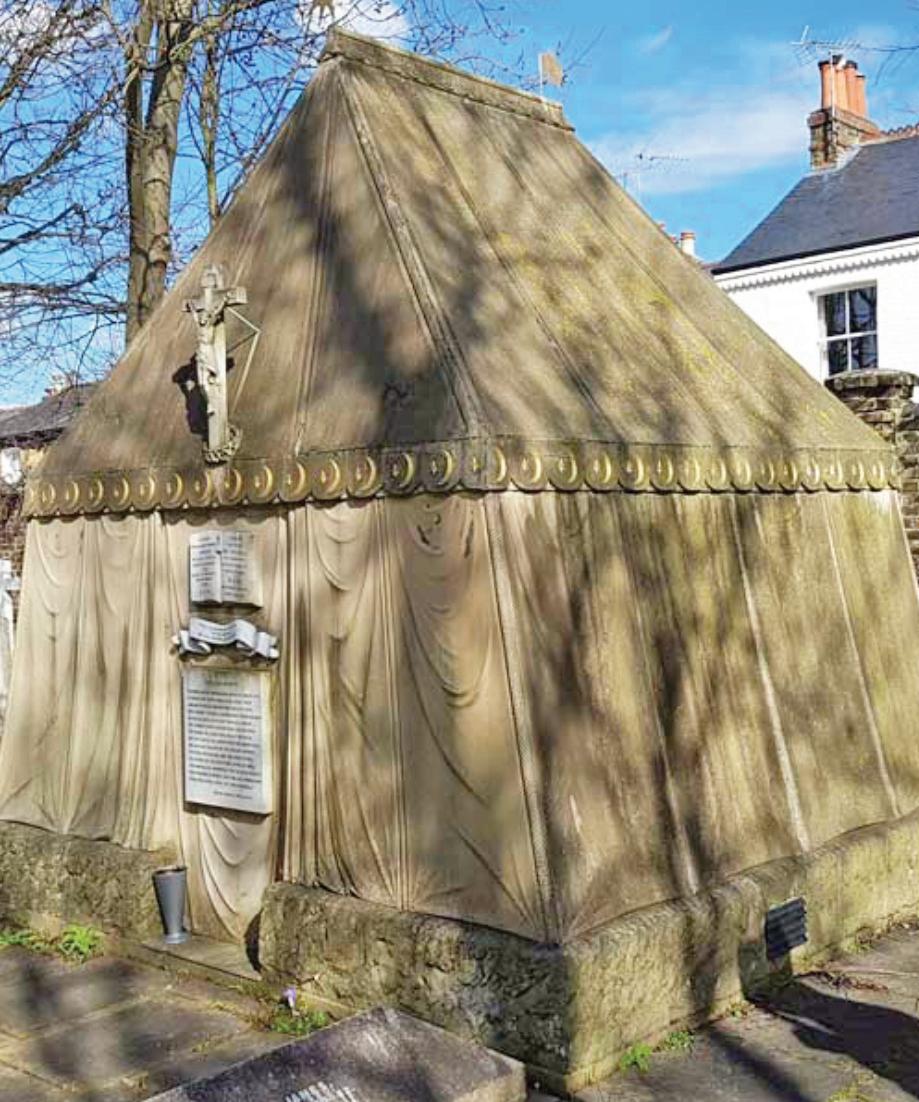
A brilliant linguist, he translated One Thousand and One Nights and The Perf umed Garden and published the Kama Sutra in English. Lady Isabel was also a writer and explorer. She travelled to four continents with her husband and prided herself on being a proficient traveller, content to endure the rough conditions of 19th-century travel.
Habitats & Heritage has been awarded a National Lottery Heritage Fund grant of £249,000 for the project, £80,000 of which has been earmarked for the restoration and rest will deliver an extensive educational program unlocking its secrets for a new generation. It includes interactive learning experiences designed to engage audiences in the rich history of the Burton Mausoleum.
Father Adrian McKenna, parish priest of St Mary Magdalen's church, said: "Visitors find the Mausoleum in all sorts of ways, some just stumble across it whilst strolling along the Thames towpath and others seek it out. In the past six months alone, we've had just under 11,000 individual visits to our Google Maps site to view details of the Mausoleum.
"In 1877, Sir Richard agreed to let his wife arrange for his baptism in the Catholic Church and to call upon a priest if he was in danger of death, so that he could receive the Last Ritesthe 'Sacrament of the Sick,' allowing him to be 'fortified by the Church' and brought to the mercy of God.
"With Sir Richard barely conscious on his deathbed, it took Lady Isabel two attempts (and much persuasion) to find an Italian priest in Trieste who would anoint him with the words 'Go forth Christian soul.'"
Fr McKenna said: "Three years prior to his death Lady Isabel had arranged for Sir Richard to be baptised when he was unconscious from a heart attack. On his recovery, Sir Richard took this action in good part, but apparently without attaching much significance to it. His considerable interest in religion seems to have been more anthropological rather than a matter of faith, but God alone knows the real and conscious choices Sir Richard made in life."

Dan Sobey
“When the student is ready, the master will appear” - Lao Tzu
I’ve always loved this quote, and it sits nicely with me how we all need a little direction from time to time. It’s a curious and beautiful thing how, seemingly by chance, the right person appears at exactly the right moment“everyone comes into our lives for a reason, and sometimes it’s just for a season” my wife is fond of saying.
Looking back along this rickety journey of life - the path of a pilgrim - I can think of many “masters” who have crossed my way. Great sports coaches and martial arts instructors. Wise business and financial mentors. Even authors of classic books whose words have shaped my thinking. Each, in their own way, has helped guide my steps.
Those that seem to stick most prominently in my mind are some of the Spiritual companions and guides I’ve met along the way – my friend Fr Eugene during my teenage years up in Brizzol.

One who stands out most clearly in recent years is Fr Adrian Toffolo.
I first met Fr Adrian (technically Monsignor Toffolo, but we all know and love him simply as “Father”) back in 2012. This was at a Lenten quiet day held at Buckfast Abbey and it was in a time of ‘transformation’ in my life – a period that was as painful in growth as it was in glorious enlightenment as to who I was. Over the years he has become not only a familiar face on retreat but a trusted spiritual companion and deeply valued guide.
He really did sit into the quote above – when I was ready the master would appear.
I’ve had the great privilege of sitting under his homilies, receiving his spiritual direction, andon several silent retreats - being personally accompanied by him in that quiet, sacred space where the soul meets God.
Fr Adrian’s priestly journey is a rich and faithful one. Ordained in 1968 - on his birthday, no less - his ministry has spanned decades and countries: from parish work across Devon and Cornwall to shaping future priests as Rector of the Venerabile Collegio Inglese in Rome. Whether leading large congregations or offering one-to-one counsel, he has always brought depth, integrity, and compassion to his vocation.
But what strikes me most - and always has - is how Fr Adrian communicates spiritual truth. His homilies land in that rare and beautiful
space where intellect and heart meet. They are learned enough to stand up to scrutiny - rich in theology, Church teaching, and scriptural insight - yet presented with such clarity and gentleness that even my simple mind can follow along.
He has a gift: he speaks from the heart to the heart. His way of opening up the Gospels, the sacraments, and the Catholic way of life makes faith not only accessible, but liveable. Through his words and witness, he models what it means to be a Catholic Christian in today’s world - and helps others to see, simply and clearly, what the right thing to do is.
The old saying, “When the student is ready, the master will appear… and when the student is truly ready, the master will disappear,” captures something of the relationship between student and guide. When I learned of Fr Adrian's retirement from parish work and moving back to his ancestral home in Italy – I thought typical! I’m not ready for him to go, yet at my next retreat - who should answer the door? Fr Adrian. A spiritual director isn’t there to hold your hand every step of the way, but rather to help you find your own way - to listen, discern, and ultimately follow God’s direction for yourself.
In our noisy, restless world, voices like his are rare and precious. Fr Adrian doesn’t need to shout; his wisdom speaks quietly, yet deeply. And for that, I am endlessly grateful.
Thank you, Fr Adrian, for your faithfulness, your intellect, your warmth, and your wonderful way of pointing us not just toward God - but walking with us, gently, toward Him.
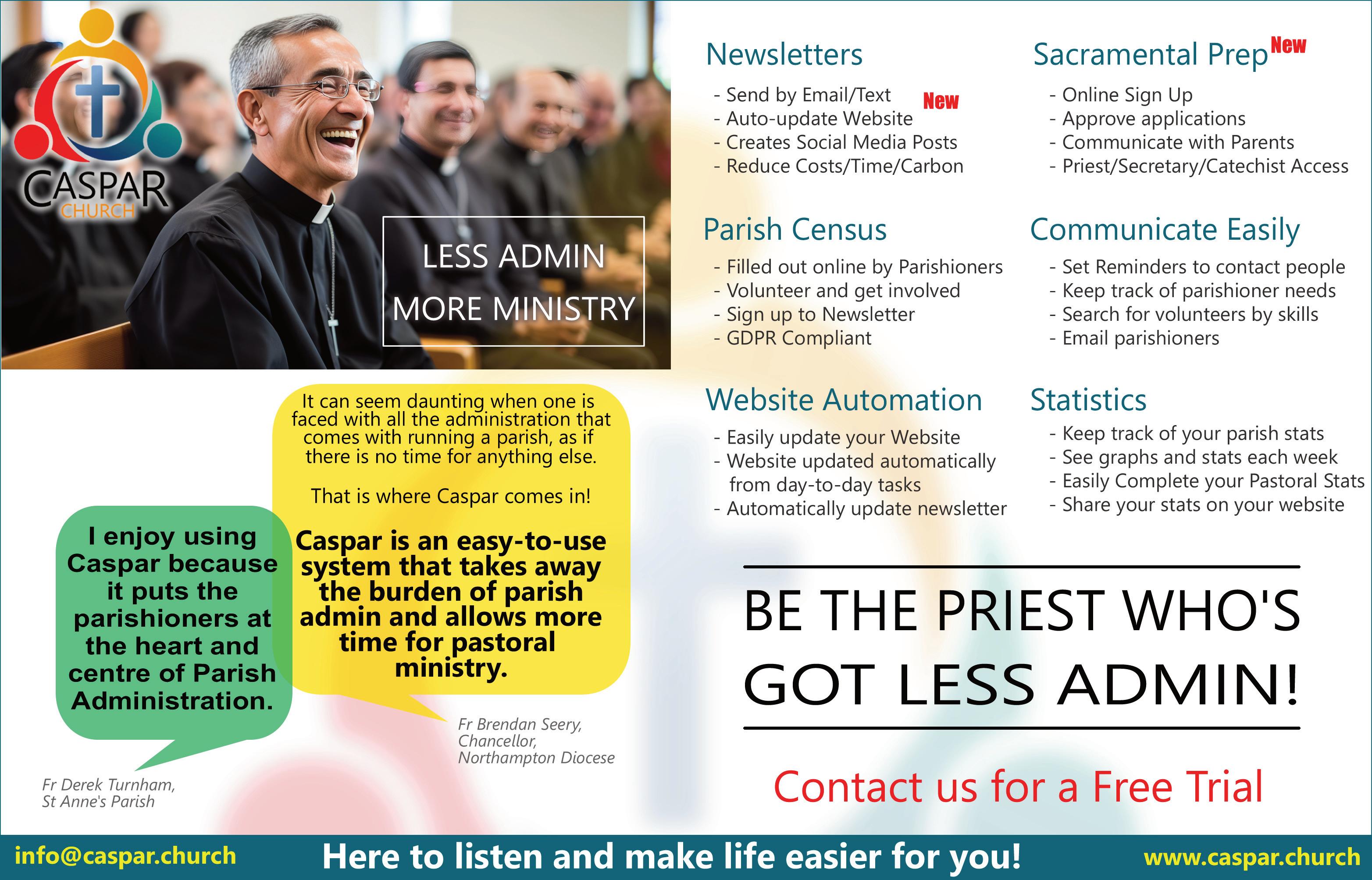

You can use both sets of clues to solve the puzzle: the solutions are the same.
CRYPTIC Across
4 One of the twins seen tucking into Lincolnshire sausages (4)
5 British sect's on edge (6)
8 Number, including the Queen, he fiddled, so some say (4)
9 Subordinate created with care, it's said (8)
10 Complex soggy eagle, or a great seabird... (7,5)
12 ...low mental age resorting to a noble pastime (4,4,4)
13 Headgear of Oregon revolutionary angry medic donned earlier (8)
15 Menaham's dad soldier imprisoned today (4)
17 Party members after allegations, lose face (6)
18 Yeats's land in Ulster, knowledge of the Scriptures will bring it all back (4)
CRYPTIC Down
1 Nothing in vehicle list is of the age of the new king (8)
2 Philistines prevailed here, but Mongolia is free (5,6)
3 First family: one on bridge,... (4)
4 ...for the other, it's the brink, mate (3)
6 Publish again in the matter of offspring (7)
7 Neal's Harems: massages for old Assyrian kings (11)
10 Push off and lose one's way (3,4)
11 Fruit in here has variety enclosed by old railway (8)
14 One pub promoted Italian port (4)
16 One of twelve in Israel to get higher than black belt (3)
QUICK Across
4 Isaac's firstborn (4)
5 Rim;frontier(6)
8 Roman emperor between 37 and 68 AD (4)
9 Female domestic servant (8)
10 Common seabird of Europe; ancestor of many domestic breeds (7,5)
12 Variety of football played at a particular public school (4,4,4)
13 Headgear associated with Mexico and SW USA (8)
15 FatherofMenaham(4)
17 British political party members: Irish RC 17th century outlaws (6)
18 Poetic name for Ireland (4)
QUICK Down
1 Pertaining to two dynasties in 17th century Britain, and one in the 21st century (8)
2 Site of King Saul's last stand (5,6)
3 Robert ----, Scottish architect and furniture designer (4)
4 Verge;threshold(3)
6 Releaseoncemore(7)
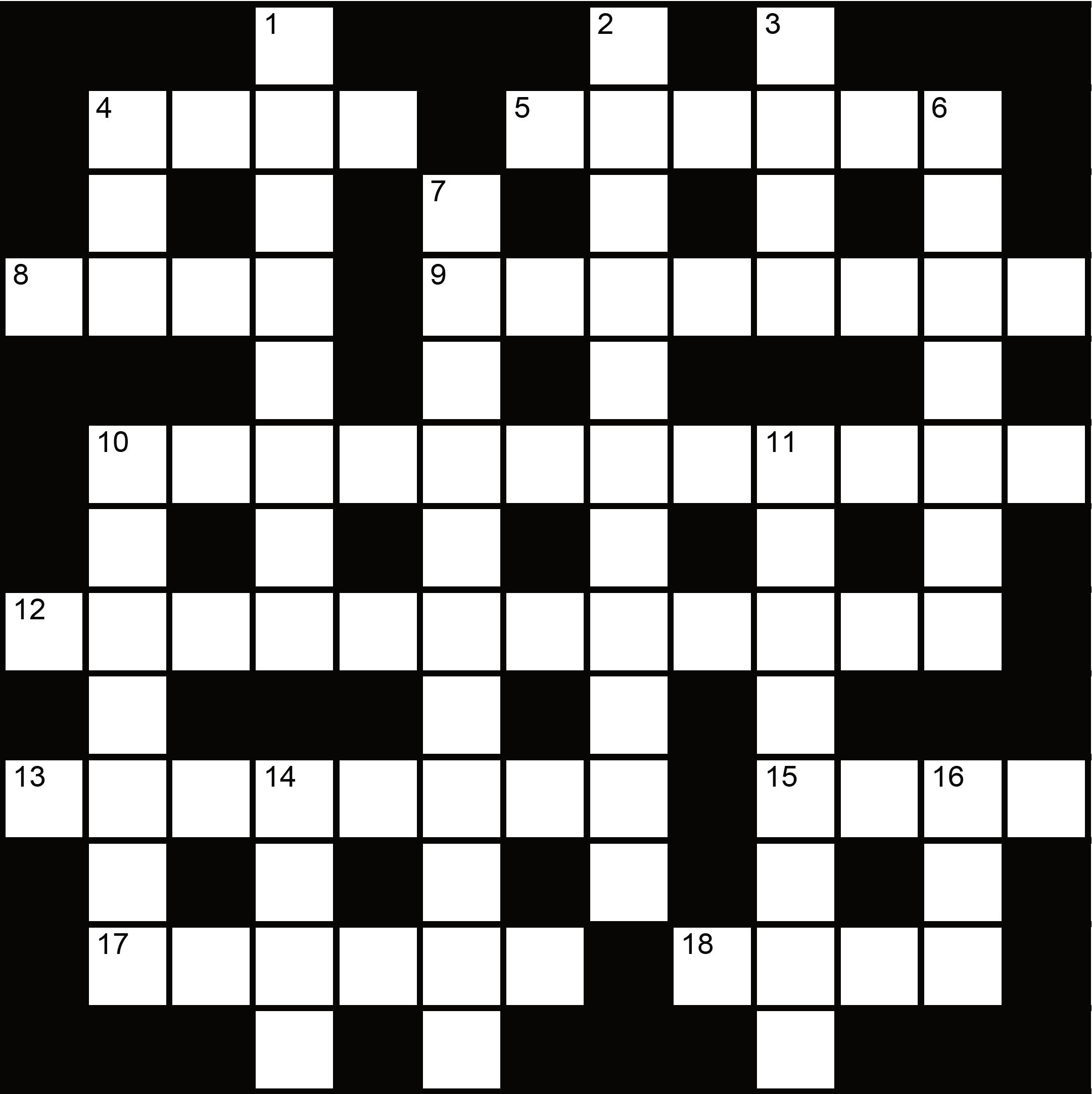
7 Assyrian king, the fifth of his name, who captured Samaria and took the Israelites into exile (11)
10 Go away and stay away (3,4)
11 Building, greenhouse, associated with fruit (8)
14 Italian Adriatic port (4)
16 Son of Jacob and tribal ancestor (3)